by David F. von Hippel, Peter Hayes and Roger Cavazos
4 August 2015
I. Introduction
North Korea’s large standing conventional force demands a surprisingly modest proportion of North Korea’s overall energy usage (though a much larger fraction of the DPRK’s limited petroleum fuels supplies) indicating a large, but not particularly active military. North Korean military energy usage seems more or less static over the years and is consistent with observations that North Korean rhetoric regarding potential military actions has increased, but that the actual actions of the DPRK’s conventional military remain muted.
David von Hippel is a Nautilus Institute Senior Associate working on energy and environmental issues in Asia, as well as on analysis of the DPRK energy sector.
Peter Hayes is Professor, Centre for International Security Studies, Sydney University, Australia; and Director, Nautilus Institute, Berkeley, California.
Peter Hayes is Professor, Centre for International Security Studies, Sydney University, Australia; and Director, Nautilus Institute, Berkeley, California.
Roger Cavazos is a retired US military officer and Nautilus Associate.
This Special Report was originally published as a Working Paper 2014-12 by the Center for Energy, Governance and Security at Hanyang University, Seoul.
The views expressed in this report do not necessarily reflect the official policy or position of the Nautilus Institute. Readers should note that Nautilus seeks a diversity of views and opinions on significant topics in order to identify common ground.
Banner Image. Nautilus Institute photo DPRK truck with gasifier
II. Special Report by David F. von Hippel, Peter Hayes and Roger Cavazos
An Updated Estimate of Energy Use in the Armed Forces of the Democratic People’s Republic of Korea (DPRK)
North Korea’s new leader inherited a large standing conventional military. Shortly after taking over, he succeeded in launching a rocket and testing a nuclear device. His actions were likely primarily driven by domestic concerns. North Korea’s governance system seems to seek strong domestic support in part by being able to demonstrate a set of strong external forces allied against the nation, which helps to make acceptable the consolidation of decision power under one charismatic leader and justifies diverting a larger portion of the populace away from the civilian sector of the economy and into the military than is the case in any other country. This large standing conventional force demands a surprisingly modest proportion of North Korea’s overall energy usage (though a much larger fraction of the DPRK’s limited petroleum fuels supplies) indicating a large, but not particularly active military. Despite increased tensions in recent years, it is not clear that North Korea’s military has actually increased its overall energy demand. North Korean military energy usage seems more or less static over the years and is consistent with observations that North Korean rhetoric regarding potential military actions has increased, but that the actual actions of the DPRK’s conventional military remain muted.
Consumption of coal, electricity, and petroleum products seem relatively static in recent years throughout North Korea’s military, including in its Ground Forces, Air Force, Naval Forces, military-related manufacturing, military buildings and other military end-uses. Consumption of fuels in the military, as in the overall DPRK economy, is limited by available supplies, particularly for petroleum products. Overall energy use is dominated by coal and electricity used in military buildings and for other end uses, while military exercises or other war preparations consume a relatively small proportion of the DPRK military’s overall energy budget.
Two-and-one-half-ton trucks are estimated to consume more one-third of the petroleum products used by the military which has negative implications for logistics sustainability in the event of a conflict. Patrol boats are the next largest user of petroleum products. Overall, in 2010, ground forces are estimated to have accounted for just under 34 percent of military petroleum products use, with naval forces consuming slightly less than 44 percent of petroleum products, and the Air Force just under 22 percent, with less than one percent estimated to be used in military buildings.
1 Introduction
North Korea has a leader who is new to both his martial and civil governance roles. This report on energy use in the DPRK military indicates some significant constrictions on his options as he seeks to balance those roles.
Kim Jong-un became North Korea’s leader in December 2011 after a relatively brief succession training period[1]. His options as a military leader are constrained in that significantly increasing the exercise tempo of the military—that is, the rate at which the military practices using its armament, planes, vessels, and vehicles—will either reduce the availability of fuels, and in particular, oil-based fuels, to the broader North Korean economic system, or North Korea will have to purchase more fuel on the international market, thus using up scarce supplies of foreign currency. North Korea’s cash reserves are thought to be low, and North Korea is operating under heavy economic sanctions from the international community, which makes paying for purchases of additional fuel even more problematic. The nation thus has only a limited capacity to buy energy on the international market[2]. Shifting people from the military to the civilian sector would nominally increase the labor supply, but North Korea doesn’t seem to suffer from a labor shortage, rather, it lacks inputs and financing with which to stimulate production. Under those conditions, increasing the labor supply by moving workers from the military to civilian life would be expected to depress wages, but since wages, like many other prices in the DPRK, are set subject to considerations other than the function of labor markets, it is not clear what effect putting soldiers into the civilian workforce would have. Moreover, the distinction between military labor and civilian labor in the DPRK is much less clear than in most countries, as soldiers in the DPRK are often deployed to work on tasks, from massive civil works such as hydroelectric dams to road maintenance to harvesting of crops, that would normally be done by civilians, and often work side-by-side with civilians.
In order to consolidate his rule and to “routinize charisma”, Kim Jong-un attempted to reach for the sky and launch a rocket to put a satellite into orbit[3]. In this, he succeeded where both his father and grandfather had not. He also ordered a successful test detonation of a nuclear weapon[4]. Those two actions alone provided a tremendous amount of legacy-building for Kim Jong Un within the DPRK. They also generated significant concern among the international community[5]. North Korean rhetoric predictably grew more aggressive after the United States included in its annual military exercises with the Republic of Korea the participation of a number bombers and fighters, specifically B-52, B-2 and F-22s[6], that had not routinely been included in exercises in the past. Some of the more recent examples of the rhetoric and even some actions include the DPRK’s March, 2013 announcements that it is pulling out of the armistice agreement with the Republic of Korea, and its threats to target US military bases with artillery[7].
With that context and background in mind, this paper focuses on how much energy and what types of energy North Korea’s military is consuming. The analysis of DPRK military energy consumption constitutes our attempt to estimate the flows of energy and fuels used by this important element of the DPRK economy. As such, the estimated military energy use structure described below attempts to provide context for DPRK military strategies that are inevitably colored by a combination of both the DPRK’s inventory of military hardware and facilities, and the energy sources that the DPRK has available to run its military.
2 Methods Used in Preparing Military Sector Energy Use Estimates
There are almost no direct data available on energy use in the military sector in the DPRK. By aggregating estimates of three factors, however, it is possible to develop a range of estimates of energy use that are plausible: what equipment the DPRK has in its armed forces, how much energy the equipment uses per unit of activity, and how many units of activity that equipment performs in a given year.
A close approximation of the sum total of major equipment in North Korea’s military is cataloged in various more-or-less authoritative sources[8]. The various sources indicate roughly the same inventories of ground, air and naval platforms, and equipment for the DPRK military.
Since North Korea imports much of its military equipment or designs its equipment based on existing foreign models, there are fairly authoritative sources describing how much energy that piece of equipment will expend per unit of use. Some of the equipment use is measured in time, for example, annual flight hours for aircraft, and some use is measured in distance, for example, kilometers traveled for ground-based vehicles and armaments. These estimates of usage are translated to annual use of fuels for each type of equipment using published data as above describing the range, maximum speed, and fuel capacity of the various vehicles, vessels, and aircraft, plus our rough estimates of average speed of travel.
The least well documented factor entering the calculation of fuel use estimates in the DPRK military, by far, is the amount of use that a given piece of military hardware receives in a given year. North Korea does not publish a list of its ground exercises, provide flight hour statistics for its aircraft, or offer data on steaming days for its military vessels. Only on the most special or tense of occasions does North Korea even cover military exercises in press designed for audiences, domestic or foreign. For example, we can confirm certain aircraft flew at least a very brief amount of time and we can confirm that so many vehicles drove for so many kilometers during a specific military parade, but there are no documented figures on military equipment usage beyond those limited cases, which can hardly, given the need to do at least some training and practice, constitute the sum total of the DPRK’s annual use of military hardware. But by referencing press reports, noting anecdotal observations, and sometimes by making the assumption that the DPRK’s armed forces, like most militaries, must practice tasks in order to stay trained, we can develop reasonable estimates of the amount of energy usage. It is also possible to project a plausible range of military energy demands for various scenarios such as an attack or a defense of a given size.
The overall methods and key assumptions that we used in preparing estimates for the different military subsectors are summarized below. Additional details of these methods and the background data that we used to prepare our estimates of fuel use are presented in the Annex to this paper. The results of our analysis are summarized in Section 3[9].
In order to estimate the energy used by the DPRK Ground Forces, we started with
estimates of the total number of mobile equipment and vehicles in seven classes:
- Tanks
- Amphibious Vehicles (used for fording rivers and lakes, or operating in wet terrain)
- Armored fighting vehicles
- Truck- and Tank-mounted artillery and missiles
- Jeeps and motorcycles
- 5-ton (freight capacity) trucks
- Other trucks and utility equipment.
Using information on the number of the different types of regiments and other units in the DPRK Army[10], and on the equipment stocks in each type of unit[11], we estimated the personnel and equipment totals in the DPRK Army. This exercise yielded a personnel total somewhat lower (936,000 versus 1.066 million) than the total reported personnel active in the Army, so we multiplied the resulting equipment totals by 1.14 to “true-up” to the total reported force strength from 1990 to 1996 levels. We used similar calculations based on other sources of estimates of the number of personnel in DPRK ground forces[12] to compute true-ups of 0.93 for 2000, of 0.89 for 2005, and of 0.77 for 2008 through 2010. These figures mean that for 2000 through 2010, relative ground forces activity in the military was assumed to, in part, decline with the reported number of troops. Next we used data from two United States sources[13] that described the various equipment types (size, range, fuel capacity, weight, engine power) to estimate the fuel consumption per kilometer of vehicle travel. We assumed average speeds during maneuvers ranging from 15 to 30 kilometers per hour, and assumed that the vehicles would be active during maneuvers about 50 percent of the time (except for engineering utility vehicles, which were assumed to be active 25 percent of the time). We further assumed that 20 percent of the stock of all types of vehicles and equipment are unusable (due to lack of fuel or spare parts, because they were under repair, or just due to age and decay) at any given time, and that the Army conducts maneuvers approximately 1,000 hours per year or roughly 3.5 24-hour days per month, in 1990, falling gradually to about 610 hours per year by 2010. Interestingly, a single type of vehicle—the DPRK’s 2 1/2 ton trucks (see Figure 1)—dominates both the numbers of vehicles in the DPRK Ground Forces (over 75 percent) and our estimate of fuel used by those forces (two-thirds).
Figure 1: DPRK 2.5 Ton Military Trucks During 2012 Military Parade[14]
We used our estimates of fuel used by light vehicles, trucks, and utility vehicles in the ground forces to estimate the amount of fuel used by support vehicles in the DPRK Air Force and Navy. We did this by applying simple ratios of the personnel in each branch to the fuel use totals calculated for similar activities in the DPRK Army.
2.2 Fuel Use in Aircraft
For Aircraft in the DPRK Air Force, we used estimates of each class of aircraft[15] and information on the stocks of particular aircraft[16] to estimate the current stocks by model of plane (or helicopter). Most of the DPRK’s aircraft are antiquated, with many models dating from the 1960’s or before. Of the approximately 1400 aircraft in the DPRK inventory as of 1990, approximately 750 were fighters, 80 were bombers, 300 were transport aircraft (90 percent of which are the small single-engine Russian AN-2 biplanes), and the remainder were helicopters. The DPRK produces no aircraft of its own, but does make some parts for some models. The only indication we could find of a significant addition of aircraft to the DPRK’s military fleet between 1990 and 2010 is a mention that the “Kazakhstani government…admitted that the MiGs [found aboard a Ruslan transport aircraft at Baku city airport] were sold to North Korea and that five shipments of a total of 30 MiG-21s had successfully taken place ” in the late 1990s. We assume that this transfer has had little impact on overall usable stocks of that aircraft, or on training levels (and thus energy use) [17].
Information on aircraft range, size, and fuel capacity was gleaned from the US documents mentioned above, from Jane’s All the World’s Aircraft[18], and from other sources[19]. These data were used to estimate the “fuel economy” of the planes and helicopters in the DPRK stock.
Usage of aircraft in the DPRK military, based on anecdotal information, has always been rather low relative to the air forces of other nations with large militaries, and appears to have remained low in recent years. Low use of aircraft likely stems from numerous related factors: the typically advanced age of aircraft platforms, the scarcity of fuel and parts, and the DPRK’s typically ground-oriented military doctrine. Our estimates for the usage of individual types of aircraft is presented below.
- Fighters and Bombers: 18 hours per year in 2010. Fighter missions are generally short in time duration. We assume an average of about 1.5 hours per month of active practice/training time for bomber and fighter pilots, and that the bombers fly with fighter escort. Note that this is an average figure over all fighters and bombers in the DPRK inventory, and that listings of DPRK military aircraft include many more fighters (on the order of 750) than bombers (on the order of 80, including another 160 or so dual/use fighter/bombers). Figure 2 shows a DPRK F-5 (MIG-17) “Fresco” fighter.
Figure 2: DPRK F-5 (MIG-17) “Fresco” Fighter Aircraft[20]
- Transport Planes are assumed to have operated an average of 40-hours per year in 2010. Transport missions are generally longer in duration than training missions for fighters and bombers, but since the longest direct mission within North Korea is about an hour and a half long (~650 kilometers from southwest South Hwanghae province to the far northern tip of Ryanggang province), transport flights will of necessity be of limited duration. Transport missions may, however, make many stops along the way, and since the bulk of the DPRK’s transport fleet are small, low-speed AN-2 “Colt” aircraft, missions may take longer, on average, than if more modern aircraft were used. Our assumption equates to an average of somewhat less than one mission per week per plane, though in fact, as with all of the categories of aircraft, a relatively few aircraft may get the bulk of the work, while others remain in storage (or are inoperable).
- Military helicopters are assumed to have operated and average of 50 hours per year during 2010. There are some KCNA (Korea Central News Agency) reports of North Korea ordering helicopters to pick up people. There is also a general debate among international analysts of military tactics, which may or may not reflect North Korean military thinking, that helicopters may help North Korea avoid mines during any anticipated amphibious landings on South Korea. Helicopters, in general terms, are also well-suited for the mountainous Korean terrain and the likelihood that, if a war starts on the Korean peninsula, every runway in the DPRK will be targeted by South Korean and U.S. forces. Helicopters have also recently re-appeared in propaganda videos released by the DPRK. This highly anecdotal evidence has led us to increase our estimate of DPRK helicopter use from the somewhat lower values assumed in earlier years.
It is quite possible that some aircraft receive substantially more use than we have assumed, but probably just as likely that a large number of aircraft are entirely or effectively in “mothballs” (long-term storage) and receive little or no use. In 2005, General Leon LaPorte was reported to have said that North Korean pilots only fly 12 to 15 hours per year[21]. It is unclear, however, which pilots and which aircraft the statement was meant to reference. For most aircraft, we assumed that their average airspeed while on training or practice missions is about 80 percent of their reported maximum speed; this assumption was used in computing average fuel economy based, as noted above, on the rated range and fuel capacity of each type of aircraft.
2.3 Naval Fuel Use
Our estimates of fuel use in Naval vessels used a similar approach to that applied for military aircraft: figures on the current total numbers of ships by class in the DPRK Navy were combined with several[22] inventories of numbers of ships by model to yield estimates of the current number of ships by model and type of vessel (including submarines). The DPRK’s forces include few ships of any size (by Naval standards), consisting mostly of smaller (40 to 400 ton displacement) missile attack boats (40) and patrol craft (over 400), with a number of amphibious craft designed to land troops on beachheads (about 200) and 24 diesel-electric submarines. Figure 3 shows a Sariwon class large patrol craft, one of the larger (at 450 to 600 tons displacement, depending on the source of information) vessels in the DPRK navy (but still quite small by the standards of large navies). Perhaps the only significant addition to DPRK naval forces since 1990 has been a fleet of about 130 “Kong Bang” hovercraft landing vessels, designed to carry 35 to 55 troops[23]. We assume that 90 percent of these craft were added after 1990, and 50 percent after 1996. Figure 4 shows a photo of some of this class of landing vessels in action during an exercise.
Figure 3: DPRK Sariwon Class Large Patrol Craft[24]
Figure 4: DPRK Hovercraft Landing Vessels[25]
We then compiled information on the engine power for each model in this inventory of ships, and used a benchmark figure of 0.38 lb. of diesel fuel per horsepower (hp)-hour of operation[26], plus an assumption that at cruising speed, naval ships operate at approximately half-throttle (that is, they are using half of the total horsepower available). For submarines, we used a figure of 0.50 lb. of diesel per hp-hr[27]. These data were used to estimate the fuel consumption for each vessel per hour of operation. We assumed that all of the vessels in the DPRK navy are diesel-fueled except for the very few (perhaps three) frigates that the DPRK reportedly has, which we assume use heavy fuel oil.
Despite many advances in technology, conversations in the late 1990s with a US dealer of large marine engines indicated that even the best diesels at that time were not vastly more efficient (0.32 to 0.33 lb./hp-hr) than those in use many decades ago, and that the benchmark value we are using (as described above) would be justified (perhaps even low) for the older (1960s and 1970s) engines that likely power the bulk of the DPRK fleet. While this value is derived from a reference that dates back to World War II, it is apparently still reasonably valid basis from which to derive consumption figures, particularly for a DPRK navy that is dominated by older vessels.
We assumed, based primarily on conjecture, that amphibious naval vehicles operated about 45 hours per year in 2010, somewhat of an increase from our estimate in previous years (and about the same as in 1990 and 1996). The amphibious vehicles have figured prominently in recent DPRK propaganda videos, suggesting somewhat more active usage for these vessels in recent years. We assumed submarines would operate 80 hours per year in order to maintain proficiency and train new submariners. We also assumed all other vessels operated an average of 410 hours per year, which is the equivalent of about 4 8-hour missions per month. The reasons for assuming these low operating levels (the US Naval fleet reportedly has had an operating tempo upwards of 60 percent, or over 5000 hours per year) are the same as those cited above for the low number of operating hours per aircraft—lack of fuel and spare parts, and the likelihood that a relatively low fraction of vessels are fully operable at any given time. These operating assumptions were multiplied by the per-unit fuel consumption figures and the number of ships of each type and summed to yield overall fuel consumption by the Navy.
2.4 Fuel Use in Manufacturing of Military Equipment
In an additional exercise, we estimated the amount of fuel used in Manufacturing Military Equipment. This was done by estimating the total weight of iron and steel in the Army and Navy equipment inventories (aircraft were assumed to be all imported – there are no data indicating that North Korea manufactures an indigenous aircraft), applying estimates of the average of lifetimes of each equipment type (assumed to be 20 years for large Ground Force equipment, 10 years for small armaments, and 30 years for ships and boats), and using these figures to derive an average amount of iron and steel needed per year in military manufacturing. This assumption we assumed to hold for the year 1990, but given the difficulties that DPRK industries in general have faced in obtaining inputs to production since that time, we have assumed that the output of military manufacturing declined to 75 percent of 1990 levels by 1996, and to 45 percent of 1990 levels from 2000 through 2010.
A Chinese figure of 250 kg coal equivalent per ton of steel[28], multiplied by an efficiency inflator of 1.1, was assumed to be required for each of the approximately two meltings required to fabricate military equipment[29]. It was further assumed that the fuel (assumed to be coal) used in melting iron and steel for military goods represents roughly 60 percent of the total coal needed for military manufacturing.
An estimate of the electricity requirements by this sector was prepared by applying the ratio of electricity to coal consumption estimated for the civilian iron and steel industrial subsector to the coal use estimate for military manufacturing. Figure 5 shows a photo of a DPRK factory, with typical vintage equipment and signs offering words of encouragement to workers.
Figure 5: Photo of a DPRK Factory, with Typical Equipment and Signs of Encouraging Workers[30]
2.5 Fuel Use in Military Buildings and Other Military Fuel Use
North Korea has about five percent of its population under arms, implying, since these people need places to work, eat, and sleep, as well as facilities to store armaments, berth naval vessels, and house aircraft, as well as to maintain all of the above, a significant stock of military buildings in the DPRK. As an example, Figure 6 shows a map from a Chinese source listing 16 DPRK naval bases. As with other aspects of the DPRK military, however, we currently have no direct information on regarding energy use in these structures. To compile estimates of fuel use in military buildings, we have assumed that there are 20 million square meters of floor space in such buildings (about 17 square meters, combined, of office and barracks space per active member of the armed forces), and that military buildings are heated with the same type of coal-fired equipment (and at the same efficiency) used for residential and public/commercial buildings. Electricity consumption per square meter in these buildings in 1990 was assumed to be twice that in civilian public and commercial building (55 kWh/m2-yr), based on assumptions that A) there are a number of military end-uses (radio communications, for example) not present in the civilian sector that require substantial amounts of power, and B) that the military likely receives higher-priority access to electricity than the civilian sector. Since 1990, we have assumed that the use of coal and oil in military buildings has declined from 1990 levels, though not as steeply as the use of those fuels has declined in civilian buildings. We also assume, based on anecdotal accounts, that the military has started using more wood and biomass fuels for basic functions such as cooking and heating by soldiers, though the switch to those fuels has not been as pronounced as in the general population of the DPRK.
Figure 6: Chinese Map Showing Location of DPRK Naval Bases[31]
We have included a placeholder value of an additional 10 million Gigajoules (GJ) to account for other uses of electricity in the military as of 1990. End-uses covered by this assumed allotment could include fixed radar sites, the DPRK’s nuclear research program (nominally a civilian operation), which we estimate may have had an electricity demand of approximately 5MW when operating at full capacity, and North Korea’s missile/rocketry program, which also is likely to require a large amount of electricity during its active periods. An additional 9.6 million GJ placeholder allotment was assumed for other uses of coal in the military as of 1990, along with 100,000 GJ for other uses of petroleum products.
3 Results: Estimates of Energy Use by the DPRK Military
3.1 Energy Demand in the DPRK Military in 2010
Figures 7 shows the estimated total use of coal, petroleum products, and electricity in the various subsectors of the DPRK Armed Forces as of 2010. Overall, we estimate that the DPRK military accounted for a relatively modest 8.0 percent of total energy end use in the country,, 7.1percent of coal, and 22.2 percent of electricity demand, but a much larger 31 percent of refined petroleum products.
Figure 7: 2010 DPRK Military Sector Energy Demand by Fuel
Table 1 presents 2010 energy demand estimates by subsector and fuel for the branches of the military, military manufacturing, and military buildings and other uses. Coal and electricity provide 42 and 19 percent of overall military energy use, respectively, with over 90 percent of electricity and nearly 98 per cent of coal used in the “buildings and other uses” category. Our estimates of the use of coal and electricity, however, include significant placeholder estimates for “other” uses of these fuels. The remaining 39 percent of fuels demand is supplied by petroleum products (22 percent) and wood (17 percent), with the latter being relatively high because it is assumed to be used in relatively inefficient cooking and heating stoves, and even simple fire pits, as has been observed by visitors to the DPRK. The breakdown of our estimate of petroleum products use in the military (Army, Air Force, and Navy only) is shown in Figure 8. Demand for petroleum products by vehicles and armaments in the ground forces accounts for just over one third of the total, with the Navy using 44 percent and the Air Force the remaining 22 percent. The ubiquitous two-and-a-half ton military trucks—when summed across the military branches—are estimated to use about 37 percent of total military petroleum products demand, and it should be noted that these trucks may nominally be in military service, but in fact, based on our observations and those of others visiting the DPRK, also are constantly pressed into service transporting civilian goods and, in fact, civilians, so for these vehicles the line between DPRK military and civilian petroleum products use is bound to be rather blurry.
Table 1: Estimated DPRK Military Energy Demand By Fuel and Subsector in 2010
Figure 8: Estimated 2010 DPRK Military Sector Petroleum Products Demand by Type of Equipment
3.2 Changes Since 1990
Figures 9 shows the trend in estimated energy use in the DPRK military, by fuel type, from 1990 through 2010, and Figure 10 shows the same trend by subsector. Overall military fuel use has declined for all fuels except wood, and for all subsectors, but military fuel use in the DPRK has declined by substantially less than estimated overall energy use. In 1990, our estimate is that the DPRK military used a relatively modest 4.5 percent of total energy demand in the country, including 15.1 percent of refined products, 3.1 percent of coal, and 11.6 percent of electricity demand. By 2010, however, these figures had risen to 8.0 percent, 31.2 percent, and 22.2 percent, respectively. Table 2 provides estimates of the fraction of energy use in the DPRK by the armed forces, both by fuel and for the sum of all fuels.
Figure 9: Estimated DPRK Military Energy Use by Fuel, 1990 through 2010
Figure 10: Estimated DPRK Military Energy Use by Subsector, 1990 through 2010
Table 2: Fraction of National Fuel Use in the DPRK Military, 1990 – 2010
3.3 DPRK Military Fuel Supplies in a Conflict Scenario
If North Korea chose to engage in a full-scale conflict, the pace of its war effort would be extremely rapid, with nearly continuous operations. In a three-week campaign with nearly constant operations, the ground forces would burn through the equivalent of about 6 months of what we estimate above to be its routine fuel usage. The Navy would likely use about 60 percent of their normal annual energy demand within the same three weeks. Some reduction in military energy use will likely come from decreased energy usage in barracks, since most soldiers will be in the field, and through a reduction in stocks of equipment through attrition, as equipment either fails or is destroyed in battle. Some equipment may be recovered for repair, which would likely be difficult in a conflict situation. In all probability, repair options will be minimal and likely confined to operator-level repairs.
In a full-fledged conflict with ROK/U.S. forces, the DPRK’s stock of aircraft will be rapidly disabled or destroyed as a result of air to air action, and through targeting of DPRK planes on the ground. Some DPRK planes will be kept underground, but it is likely that those aircraft will either remain in storage or, if they are sent into action, will be quickly disabled. Even if all of South Korea’s runways are cut, ROK and U.S. naval aviation, plus warplanes refueled from tanker facilities on Guam, would still be able to support a significant ROK/U.S. air presence. Once North Korea’s limited stock of 4th generation fighter aircraft are no longer functioning (North Korea is believed to have 35 MiG-29s), North Korea’s remaining aircraft will be rapidly destroyed if they fly. North Korean aircraft remaining in North Korean airspace are less likely to be destroyed – and also flying fewer hours. Because North Korea’s formidable and layered air defenses pose a serious penetration challenge, U.S. and South Korean Air Forces are unlikely to enter North Korean airspace to attack individual aircraft.
North Korea’s coastal (brown water) navy will likely sail south, parallel to the coast rather than away from the coast. The farther south the flotilla moves and the further away from North Korea’s shore based (and hence stationary) artillery batteries and the further away from any air protection they move, the more likely they are to be disabled or destroyed. It is unlikely North Korea’s navy will conduct an underway replenishment of its fuel supplies. A conflict will likely conclude prior to any naval vessels having to refuel.
All North Korean ground forces due north of Seoul and in the vicinity of the Demilitarized Zone can reach Seoul on one full tank of fuel if there is minimal to no resistance to their advance along the way. If North Korean ground forces encounter strong resistance or are forced to take a circuitous route to Seoul they will likely not have fuel to go much further than Seoul. Unless—and this may be an element of DPRK strategy—the DPRK is able to capture and tap fuel depots in the ROK, within four days at the most, North Korea will need to move several thousand refueling vehicles along exposed routes through South Korea in order to refuel and re-arm the North Korean military. The ubiquitous two and one half ton truck and all its many variants are extremely vulnerable to small arms fire, artillery, missiles, and other weapons. North Korea would need to refuel the energy-intensive fleet of two and one half ton trucks often in order to keep their military operation viable. It is unlikely North Korea can sustain such a dynamic and growing logistics chain for more than a few weeks, even in the event that it is able to advance into ROK territory.
Given a conflict scenario similar to that sketched out above, several years ago, we carried out a rough calculation that suggested (and an updated version still suggests) that it would take about three to four months of DPRK refinery output, at current levels, to resupply the gasoline and diesel fuel that the military would use in the first month of an active conflict. By the end of the first month of conflict, it would take about two months of total refinery production plus imports (assuming current levels) of gasoline and diesel to operate for an additional month of war the DPRK military vehicles that we estimate might remain operable after the initial 30 days of conflict.
This calculation includes several simplifying assumptions, each with significant to considerable degrees of uncertainty. First, it assumes that 50 percent of DPRK military ground vehicles and armaments would be inoperable after 30 days of conflict, and that 90 percent of the DPRK’s navy and 100 percent of its air force would be similarly inoperable or in deep storage. Given the superior firepower, particularly from the air, of the ROK/U.S. alliance, these assumptions seem reasonable to us. Second, it assumes that the DPRK does not have many months of fuel stored in deep bunkers. Here, we have no direct information one way or another, but suspect that the relatively constant fuel shortages over the past decade and more have probably eroded stocks, at least somewhat. Even if there were large stores if fuel deeply buried in the mountains of the DPRK, as is assumed by many, if only 50 percent of ground vehicles are operable, there will be limited capacity to move the fuel stocks to where they are needed. Third, it assumes that the one operating refinery continues to provide fuel at current levels, and that the second major DPRK refinery, at Sonbong on the DPRK’s northeast coast (currently and recently inactive) is not reopened. The degree to which the currently-operating refinery, in the DPRK’s northwest and connected by pipeline with China, maintains its output depends largely on the degree to which China continues supplying crude oil. Refineries are easy military targets, but it seems unlikely to us that the ROK-US forces would attack a facility so close to China. Whether China might increase or decrease the flow of crude oil to the refinery is an open question—our guess is that they might not do either. Reopening the Sonbong refinery would likely take much too long to help much in the event of a conflict, and it is unclear where the crude oil to fuel it would come from. Fourth, we assume that the current (mostly minor) sources of refined products would not increase or decrease much as a result of a conflict. If anything, it seems to us that it would be more difficult, not easier, to import oil by truck, train, or small tanker ship in the event of an armed conflict.
These caveats notwithstanding, the essential finding from our calculation is that the DPRK military would quickly—in a matter of weeks or certainly months—run short of fuel in any major armed conflict. With regard to consideration of the terrible prospect of war on the Korean Peninsula, this finding has (at least) two implications. First, the major part of a war between the DPRK and the ROK and its allies is likely to be over, at least in terms of use of large fuel-using vehicles by the DPRK, within two or so months. Second, knowing that a war is likely to be brief, the ROK and its allies might be more inclined NOT to inflict difficult-to-reverse damage on major DPRK energy facilities.
4 Conclusion
Though North Korea possesses the World’s fifth largest military and has the largest proportion of its citizens under arms of any nation[32], the military places a surprisingly light, relative to its size, burden on the overall energy budget of the country. There are likely both political and commercial reasons for such a large military to use energy so austerely. On a political level, one possibility is that it is the calculation of the DPRK’s leadership that the combination of aggressive rhetoric, as the DPRK has engaged in over the past few months, plus too much military activity can lead to perceptions that an attack is imminent, and sets the stage for miscalculation on either the DPRK or the ROK/U.S. side. On a practical level, a high military operations tempo places an excessive strain on existing DPRK supplies of petroleum fuels, and/or results in unaffordable outlays of hard currency to import diesel oil and gasoline.
The international community has limited influence on how North Korea balances those choices but there are frameworks and suggested pathways that the international community can adopt to shape the DPRK’s response to its current dilemma[33]. Consideration of the status of energy use in the DPRK military as described in this Working Paper, together with a thorough understanding (to the extent possible) of the motivations of DPRK leaders, can help to inform policy decisions related to the governance and future of the Korean peninsula.
III. ANNEX TO
“AN UPDATED ESTIMATE OF ENERGY USE IN THE ARMED FORCES OF THE DEMOCRATIC PEOPLE’S REPUBLIC OF KOREA (DPRK)”: SUMMARY RESULTS, AND DETAILS OF DATA AND ASSUMPTIONS USED IN CALCULATING DPRK MILITARY SECTOR ENERGY USE
Iv. References
[1] Kim Jong-il’s stroke forced the succession issue for the dynastic Kim family. For more information about Kim Jong-il’s stroke see “Doctor Confirms Kim Jong-il Stroke” http://www.nytimes.com/2008/12/12/world/asia/12kim.html?_r=0. For the immediate dynamics following Kim Jong-il’s death and Kim Jong-un’s succession, especially the Chinese-language perspectives on the issue, please seeRoger Cavazos (2011), Policy Forum 11-45: Nothing Succeeds Like Succession: Chinese Language Perspectives on Kim Jong-Un’s Transition to Power dated December 23, 2011, and available as https://nautilus.org/napsnet/napsnet-policy-forum/nothing-succeeds-like-succession-chinese-language-perspectives-on-kim-jong-uns-transition-to-power/#axzz2Rg30i06B. Heonik Kwon and Byung-ho Chung detail, from a sociological perspective, the preparations that go into “routinizing charisma” and solidifying Kim Jong-un’s role in their 2012 book, “North Korea: Beyond Charismatic Politics” (Rowman and Littlefield Publishers).
[2] Marcus Noland and Stephan Haggard of the Peterson Institute of International Economics track and assess sanctions and their (often limited) impacts on their Witness to Transformation blog. They also compile the blogs into Working Papers and chapters in various books. http://www.piie.com/blogs/nk/?p=9618
[3] In April 2012, there was an unsuccessful launch of a DPRK rocket. In December 2012, the DPRK did succeed in putting a satellite into orbit. The satellite does not appear to function, but it is in the prescribed orbit. David Wright discusses the failed launch in his 2012 article “Questions about the Unha-3 Failure” in 38 North, dated May 4. 2012, and available as http://38north.org/2012/05/dwright050412/; Jonathan MacDowell (2012) covers the technical parameters of the orbit in “Jonathan’s Space Report No. 671”, dated 12/12/2012, and available as http://planet4589.org/space/jsr/back/news.671 ; Chinese-language press also dutifully covered the orbital details in Chinese, but not in English, in a bi-lingual article http://news.xinhuanet.com/english/bilingual/2012-12/12/c_132036448.htm That article and 20 other Chinese-language reactions are summarized at http://sinonk.com/2012/12/18/red-glare-chinese-responses-nk-missile-launch/.
[4] The Comprehensive Test Ban Treaty Organization discusses their detection of the explosion on February 13 at http://www.ctbto.org/press-centre/press-releases/2013/on-the-ctbtos-detection-in-north-korea/.
[5] See, for example, The Economist (2013), “North Korea’s nuclear test: Fallout”, dated February 16th 2013, and available as http://www.economist.com/news/asia/21571938-chagrin-his-neighbours-young-despot-appears-determined-continue-his-familys-atomic.
[6] See for example, Peter Hayes (2013), “Tactically Smart, Strategically Stupid: Simulated B-52 Nuclear Bombings in North Korea”, dated March 20, 2013, and available as https://nautilus.org/napsnet/napsnet-policy-forum/tactically-smart-strategically-stupid-simulated-b52-nuclear-bombings-in-korea/#axzz2OsCv73LQ
[7] See, for example, BBC New Asia (2013), “US-South Korea drills begin amid North Korea tensions”, dated March 11, 2013, and available as http://www.bbc.co.uk/news/world-asia-21737859; and Reuters (2013), “North Korean nuclear test, war threats “unacceptable”: U.N.’s Ban Ki-moon”, dated March 9, 2013, and available as http://www.reuters.com/article/2013/03/09/us-korea-north-ban-idUSBRE92807Y20130309.
[8] Among the many sources that have been tracking this over the years, we consulted include Jane’s Armour and Artillery Systems 2011-2012 edited by Christopher F. Foss; Jane’s All the World’s Aircraft 2011-2012, Paul Jackson Editor-in-Chief; Janes’s Fighting Ships 2011-2012 edited by Commodore Stephen Saunders; The Korean Military Balance: Comparative Korean Forces and the Forces of the Neighboring States published in July 2011 by the Center for Strategic and International Studies, authored by Anthony Cordesman, and available at http://csis.org/files/publication/110712_Cordesman_KoreaMilBalance_WEB.pdf; and the Asian Military Review , Regional Air Force Directory, 2013. http://www.asianmilitaryreview.com/the-amr-regional-airforce-directory-2013/
[9] The discussion in this section adapts, updates, and/or elaborates on several previous works by the authors and their colleagues. See, for example, David von Hippel, and Peter Hayes (1997), An Estimate of Energy Use in the Armed Forces of the Democratic People’s Republic of Korea, Nautilus Report dates November, 1997, , available as http://nautilus.wpengine.netdna-cdn.com/wp-content/uploads/2011/12/Nk_military_energy_use_estimate.pdf; and David von Hippel, and Peter Hayes (2012), Foundations of Energy Security for the DPRK: 1990-2009 Energy Balances, Engagement Options, and Future Paths for Energy and Economic Redevelopment, dated 18 December 2012, and available as https://nautilus.org/napsnet/napsnet-special-reports/foundations-of-energy-security-for-the-dprk-1990-2009-energy-balances-engagement-options-and-future-paths-for-energy-and-economic-redevelopment/.
[10] US Defense Intelligence Agency (1990?), North Korea, The Foundations for Military Strength, US Defense Intelligence Agency, Washington, DC, USA.
[11] US Headquarters Department of the Army (1982), Opposing Force Training Module, North Korean Military Forces. Department of the Army, Washington, DC, USA. February, 1982. Field Manual No. 34-21.
[12] The Republic of Korea National Intelligence Service, “North Korea Military. The KPA: Troops & Equipment”, accessed as http://www.fas.org/irp/world/rok/nis-docs/defense08.htm, and visited 5/21/02, listed the total ground forces for the DPRK at a total of 996,000 troops in 20 corps units. There were a range of different estimates for the number of ground troops in the DPRK military in the years between 2000 and 2005, though the range of estimates was not great. The document The Asian Military Balance: An Analytic Overview–A Comparative Summary of Military Expenditures; Manpower; Land, Air, and Naval Forces; and Arms Sales, by Anthony H. Cordesman and G. Ryan Faith of the Center for Strategic and International Studies, Washington, D.C., (available as http://www.csis.org/media/csis/pubs/asia_ro_asian_mb_comp%5B1%5D.pdf), published May, 2003, lists the manpower of DPRK ground forces in 2003 at 950,000 troops. Several recent estimates based on the 2008 DPRK Census, including “[North Korea Census 2008] Korean People’s Army estimated to number 700 thousand troops” (The Hankyoreh, dated 3/19/2010, and available as http://english.hani.co.kr/arti/english_edition/e_northkorea/411106.html), have estimated that the current number of people in the DPRK military is approximately 700,000. As this reduction of troops from previous estimates may not necessarily mean a proportionate reduction in movements by energy-using vehicles, we adopted a true-up factor for 2008 through 2010 that assumes a reduction in energy use equal to about half of the proportional reduction in troop levels from previous years.
[13] U.S. Headquarters Department of the Army, 1982, ibid, and US Department of Defense (1994), North Korea Handbook. US Department of Defense, Washington, DC, USA.
[14] Downloaded from Chinese website http://bbs.find800.cn/showtopic-5656.html.
[15] US Defense Intelligence Agency (1990?), North Korea, The Foundations for Military Strength, US Defense Intelligence Agency, Washington, DC, USA.
[16] US Headquarters Department of the Army (1982), Opposing Force Training Module, North Korean Military Forces. Department of the Army, Washington, DC, USA, February, 1982, Field Manual No. 34-21; Paul Jackson, Editor, Jane’s All the World’s Aircraft.2011-2012, Jane’s Information Group; the Asian Military Review , Regional Air Force Directory, 2013 available as http://www.asianmilitaryreview.com/the-amr-regional-airforce-directory-2013/.
[17] Globalsecurity.org (2011), “Korean People’s Army Air Force”, available as (http://www.globalsecurity.org/military/world/dprk/airforce.htm).
[18]Various editions of Jane’s All the World’s Aircraft, including 2011-2012, 1990-1991, 1981-1982, 1972-1973, and 1968-1969,
[19] Chant, C., (1990), Air Forces of the World, Brian Trodd Publishing House, Ltd; Taylor, J.W.R., and G. Swanborough (1979), Military Aircraft of the World. Ian Allen Ltd., UK; and the Asian Military Review ,Regional Air Force Directory, 2013 available as http://www.asianmilitaryreview.com/the-amr-regional-airforce-directory-2013/ .
[20] Photo from series of photos of DPRK military activities published by Chinadaily.com.cn, dated March 12, 2013, and available as http://www.chinadaily.com.cn/hqzx/2013-03/12/content_16302319.htm.
[21] The Chinese press references a South Korean newspaper, Dong-A Il-bo, describing a statement by General LaPorte (the Commander of U.S. Forces Korea). There are also some English-language references to the same statement, but it appears the original statement appears to come from a Wikileaks cable. The Chinese-language version is available at at http://news.xinhuanet.com/mil/2009-03/12/content_10995320.htm.
[22] Sources for number of vessels in the DPRK fleet include US Headquarters Department of the Army (1982), Opposing Force Training Module, North Korean Military Forces. Department of the Army, Washington, DC, USA, February, 1982, Field Manual No. 34-21; Stephen Saunders, Jane’s Fighting Ships.2011-2012, Jane’s Information Group.
[23] Andrew Toppan (2001), “World Navies Today: North Korea”, revised November 3, 2011, and available from www.hazegray.org/worldnav.
[24] Jason W. Henson, “FFL Sariwon class”, Harpoon Head Quarters (undated, but probably 2000s), available as http://www.harpoondatabases.com/encyclopedia/Entry1164.aspx. Note, however, that Jane’s lists Pennant number 671 as a Tral Class Corvette.
[25] News.hainan.net (2013), available as http://news.hainan.net/photo/guoneiguoji/xiaotu/2013/03/27/1324264.shtml, dated March 27, 2013. Note that an ROK television report suggested that the majority of the hovercraft shown in this image were digitally added to the picture after the event, as some of the vessels involved in the exercise reportedly suffered from engine failure.
[26] Chapman, L.B. (1942), The Marine Power Plant. McGraw-Hill, N.Y., N.Y., USA.
[27] Freedman, N. (1984), Submarine Design and Development. Naval Institute Press, Annapolis,
MD, USA.
[28] Ross, M. and L. Feng (1990), “The Energy Efficiency of the Steel Industry of China”. Energy. V.
16, No. 5, pp. 833-848, 1991.
[29] P. Zimmerman, personal communication, 1995.
[30] Photo from Club.China.com, (2010), available as http://club.china.com/data/thread/1011/2718/15/31/7_1.html, dated September 24, 2010. It is uncertain which factory this is or even what it produces, but the political messaging is lost on almost all. The foreground horizontal red on white uses a North Korean formulation indicating the factory was “Received from the Supreme Leader.” The foreground vertical white on red sign reminds everyone that “all the time is public time” or work diligently. The horizontal sign above the woman’s head says “Construct a strong and prosperous great nation” followed by something illegible. The upper right background horizontal sign proclaims “Revitalize (the country)”. The misalignment of the gauges under the Supreme Leader sign may suggest they were added for effect.
[31] Map from Huaxia.com, (2010), available as http://www.huaxia.com/thjq/jsgc/jsgcwz/2010/04/1820115.html, dated April 1, 2010.
[32] Hackett, James, editor (2010), The Military Balance, 2010, Routledge, pages 411-413
[33] Peter Hayes and David von Hippel (2011) “North Korea’s ‘Collapse’ Pathways and the Role of the Energy Sector”, Chapter 8 in The Survival of North Korea: Essays on Strategy, Economics and International Relations, Edited by Suk Hi Kim, Bernard Selinger, and Terence Roehrig, McFarland & Company, Inc.


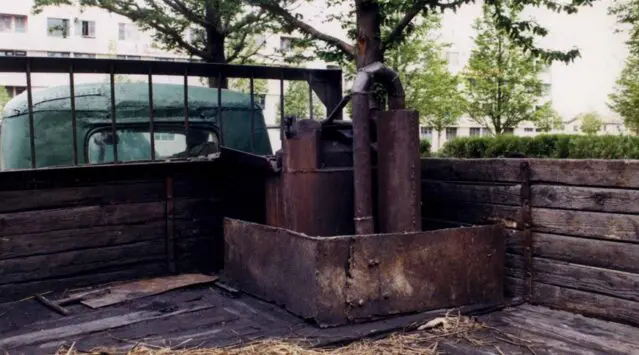

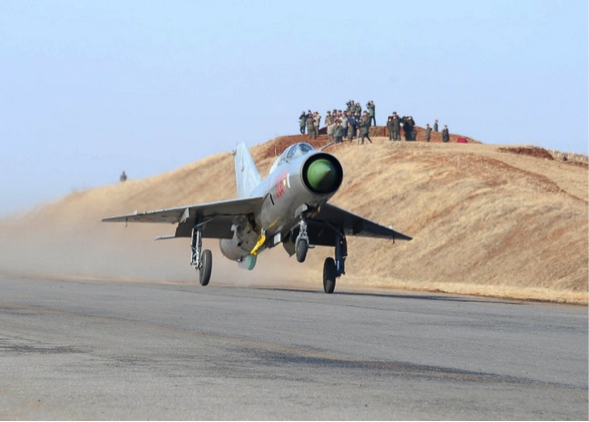











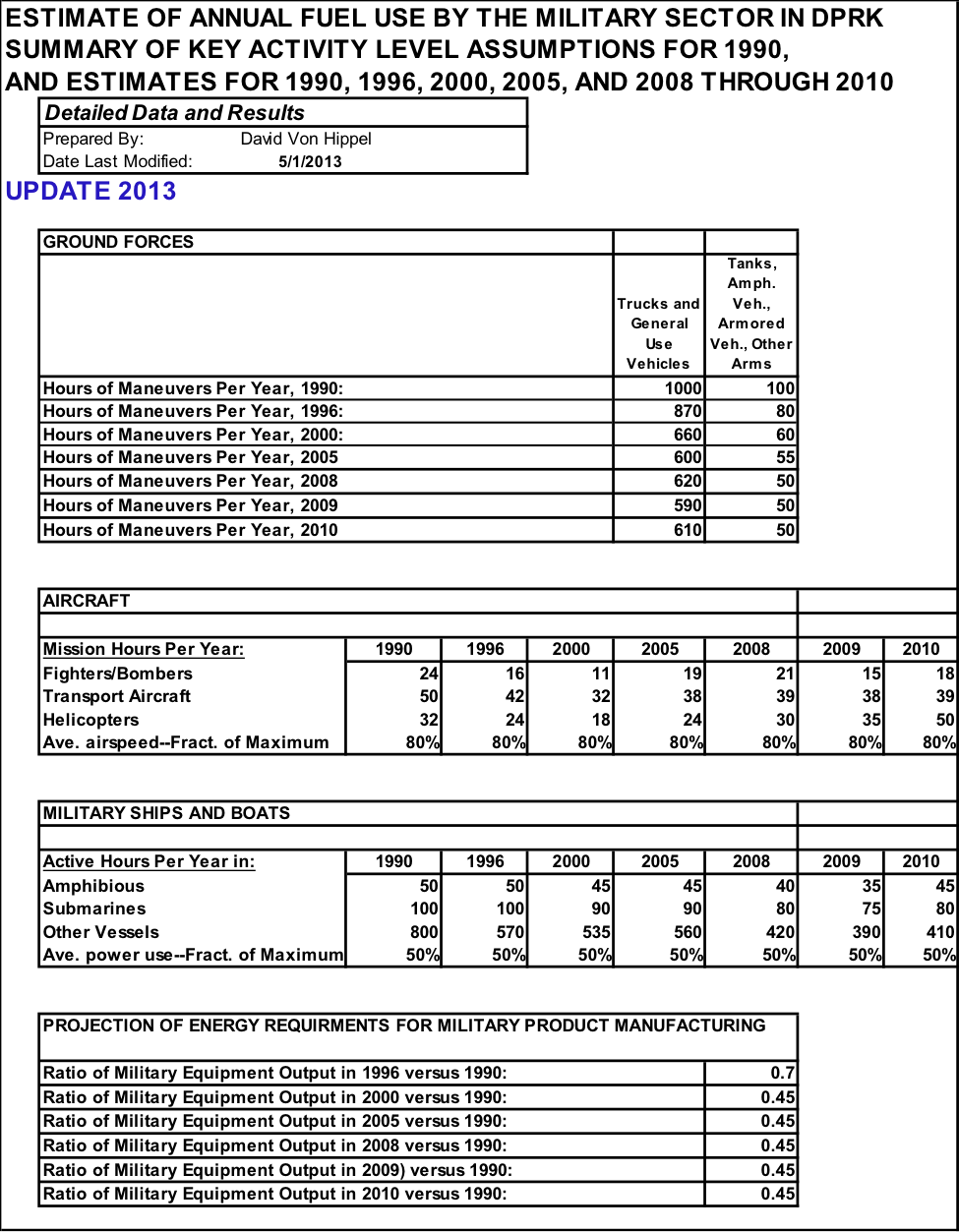
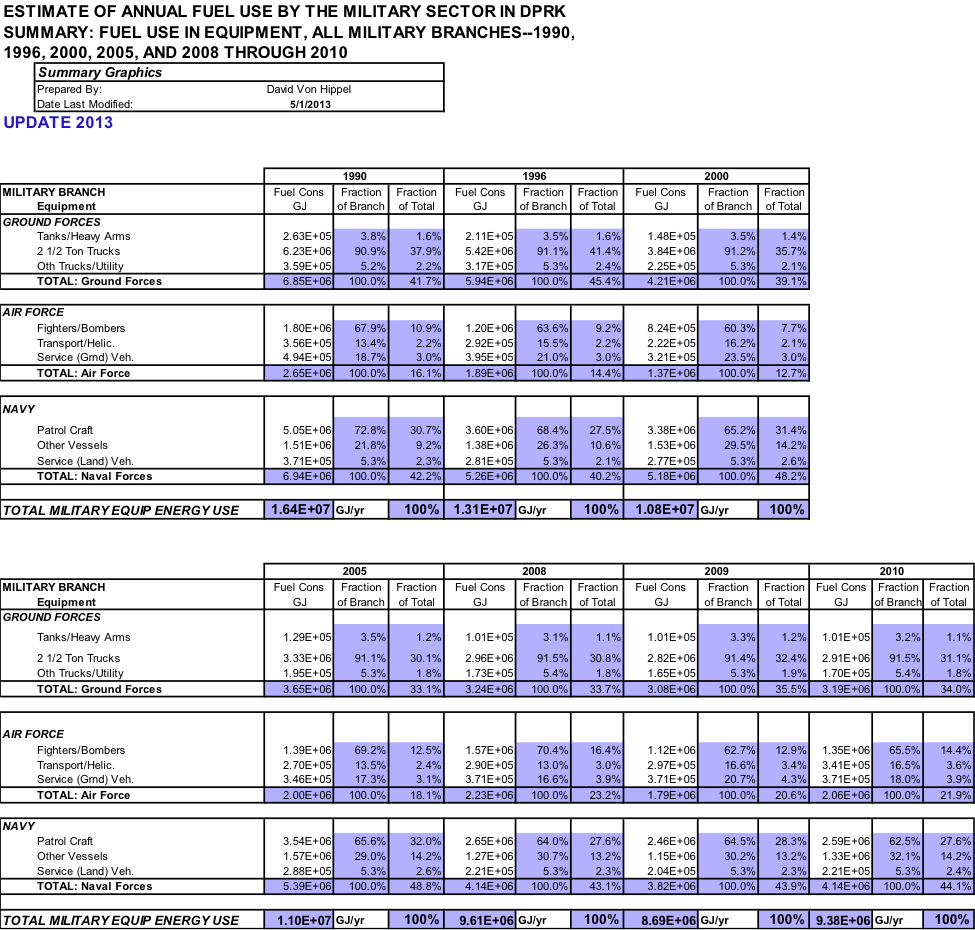
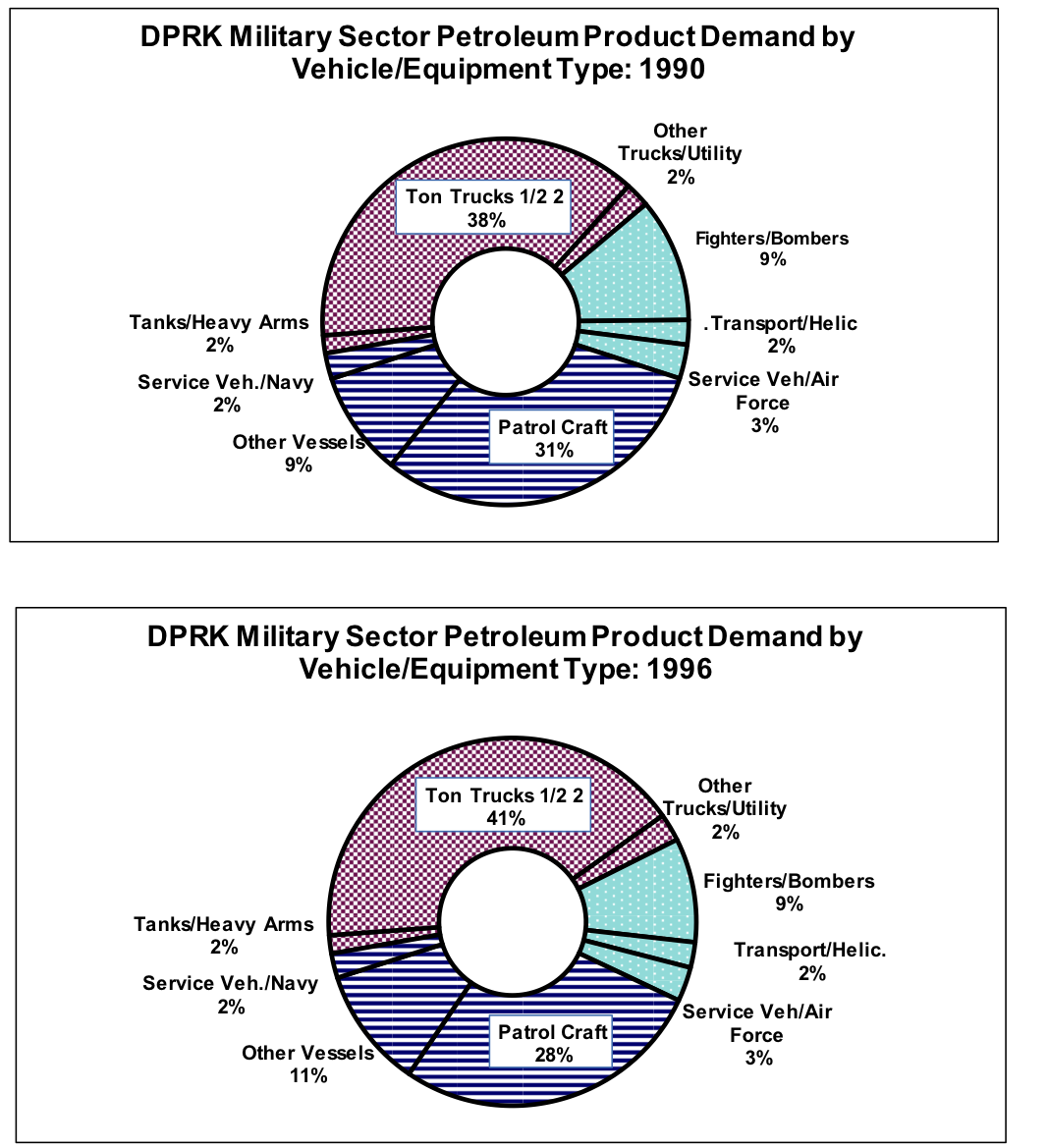
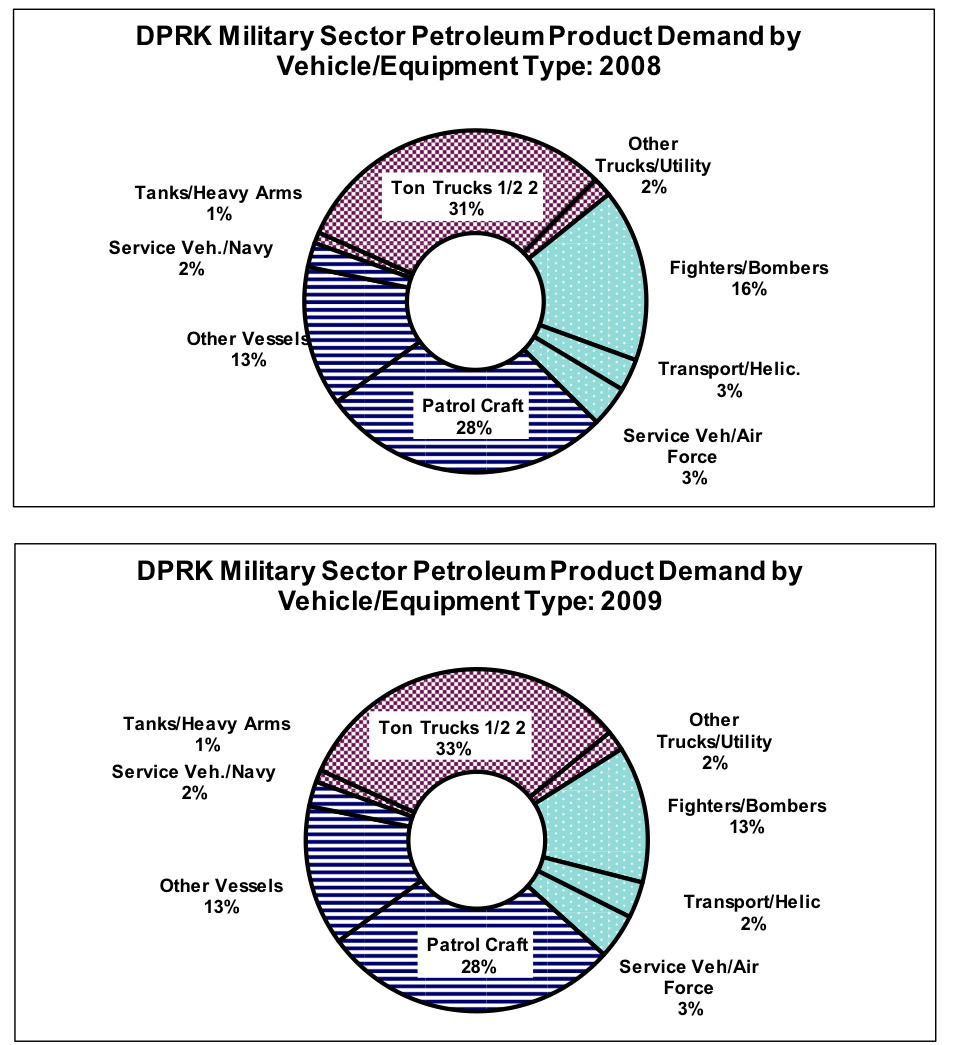
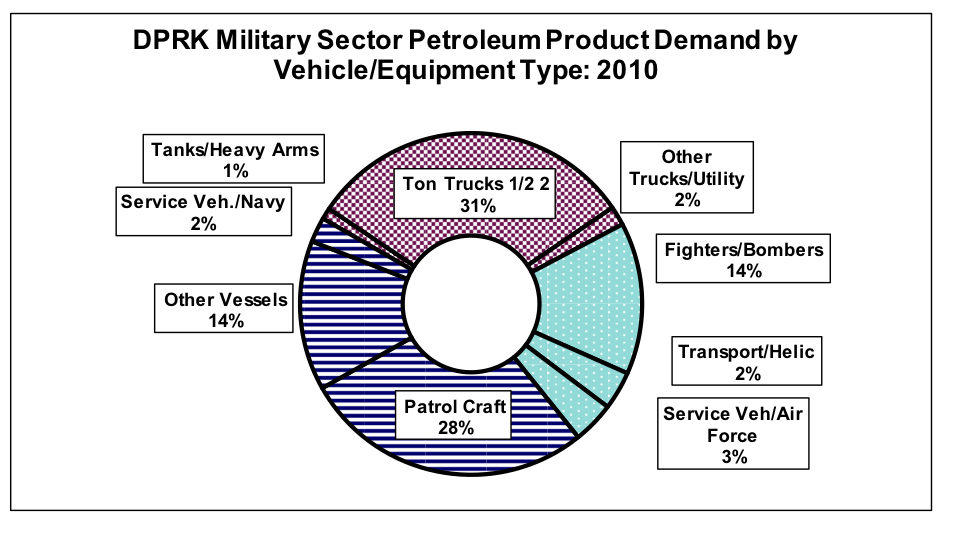
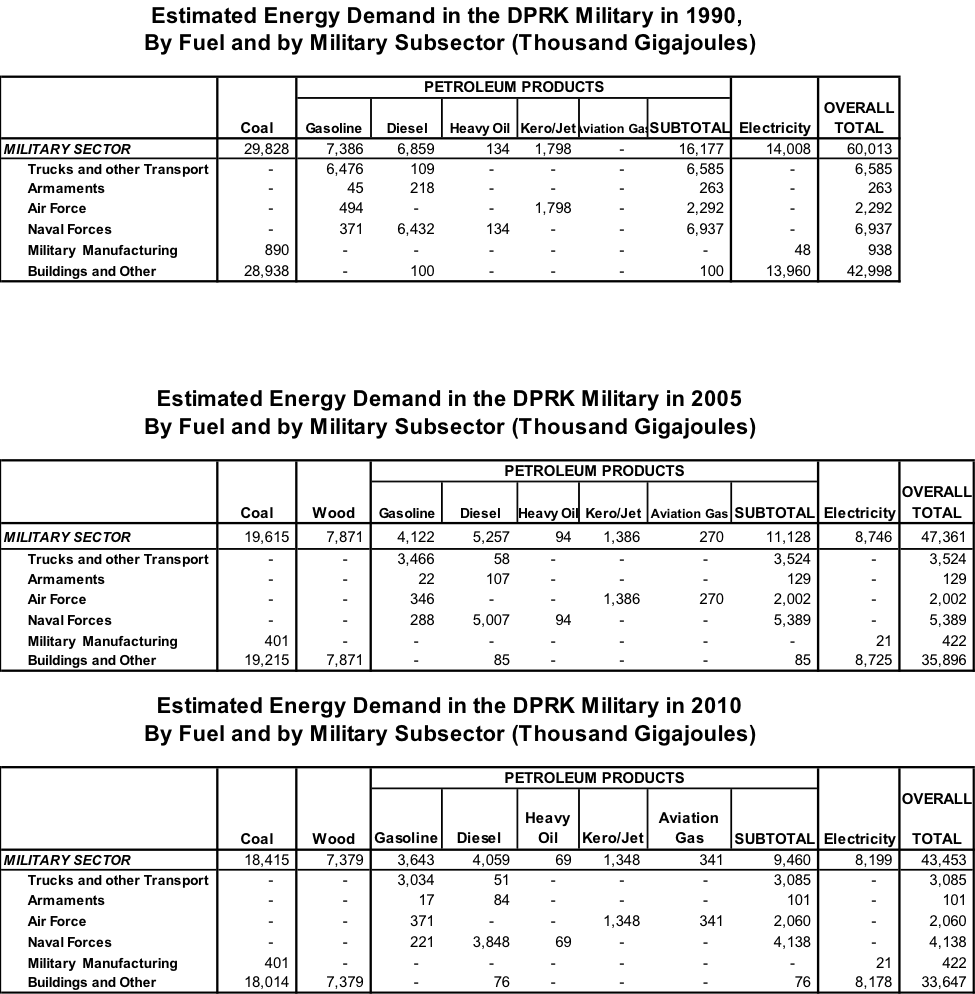
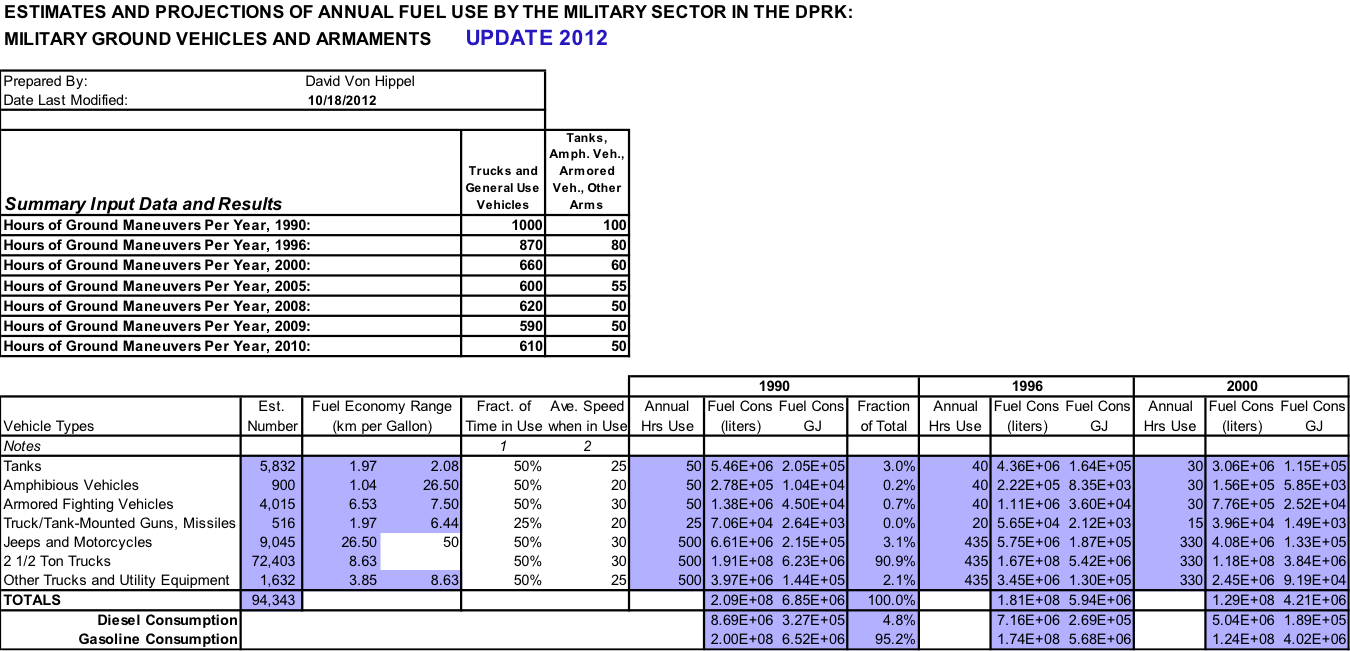

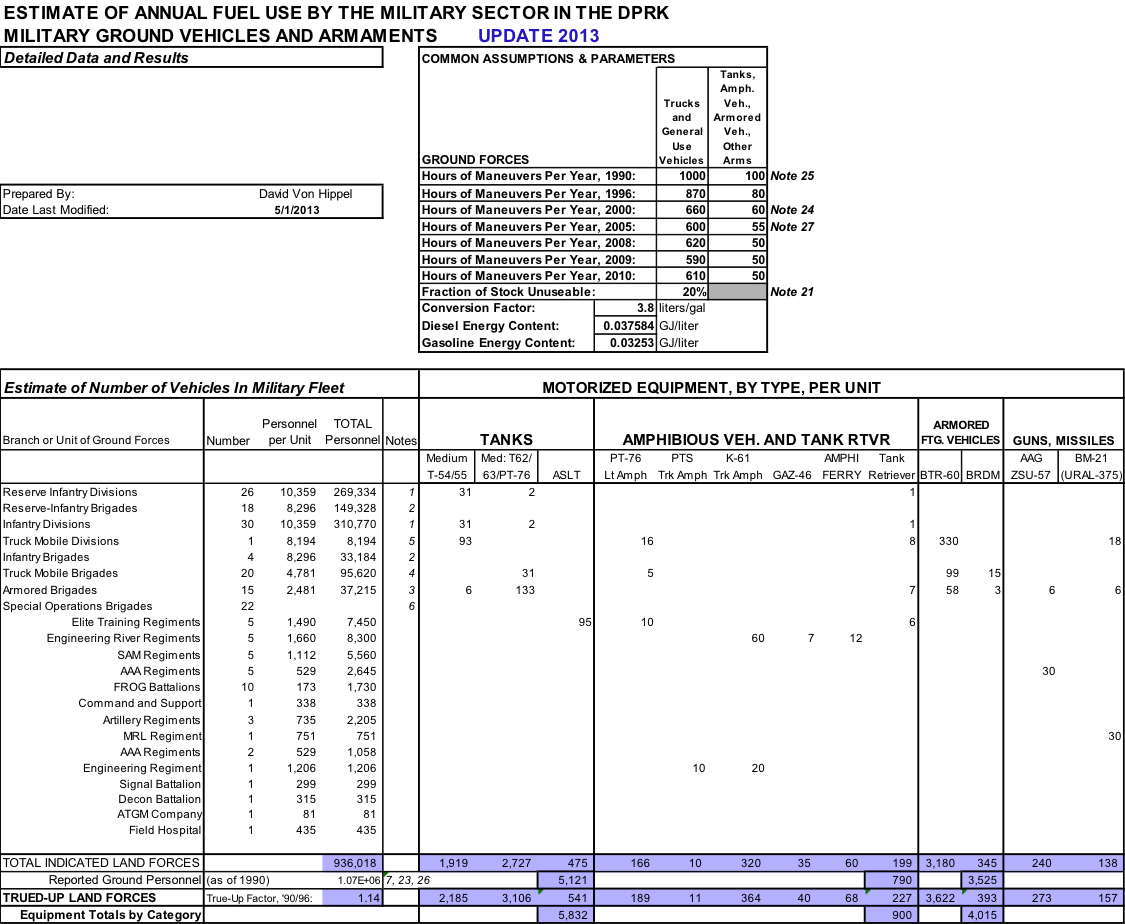

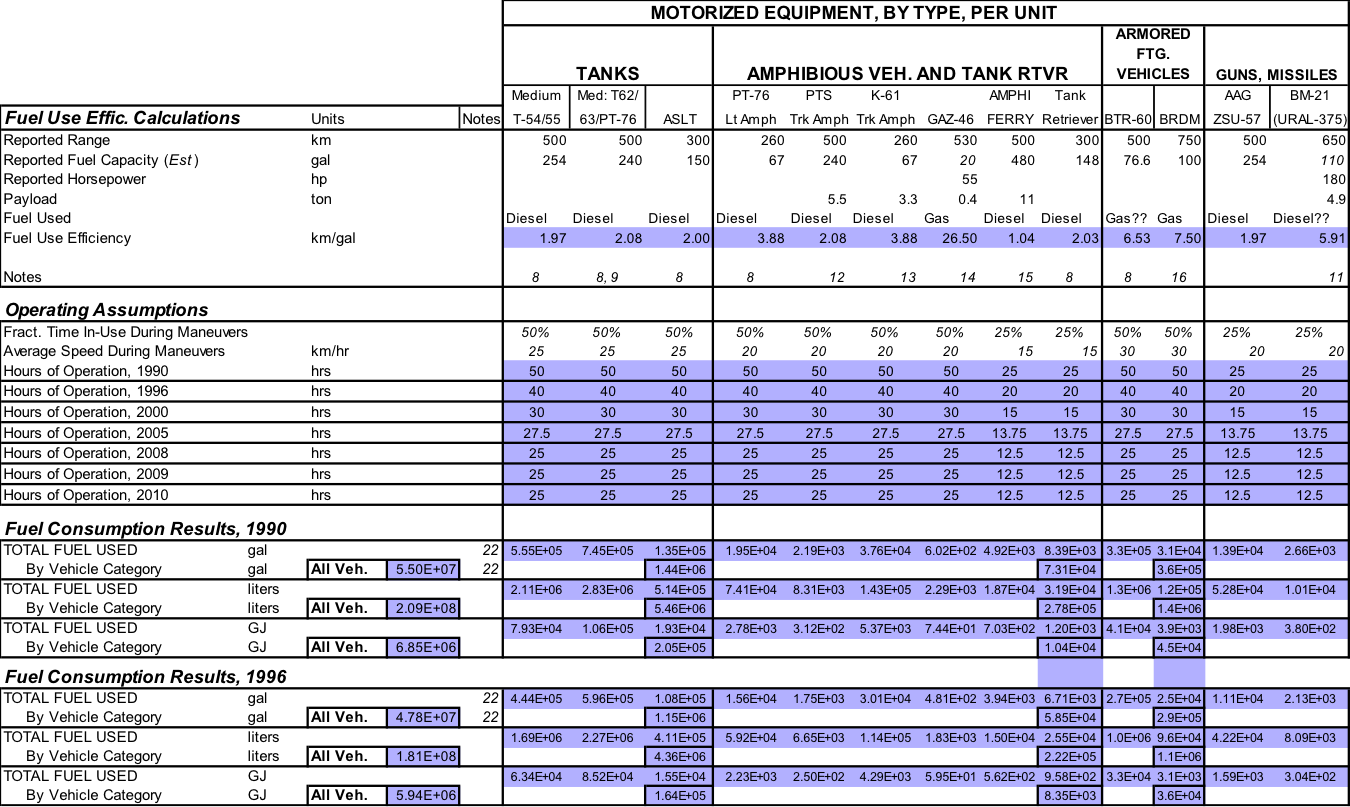
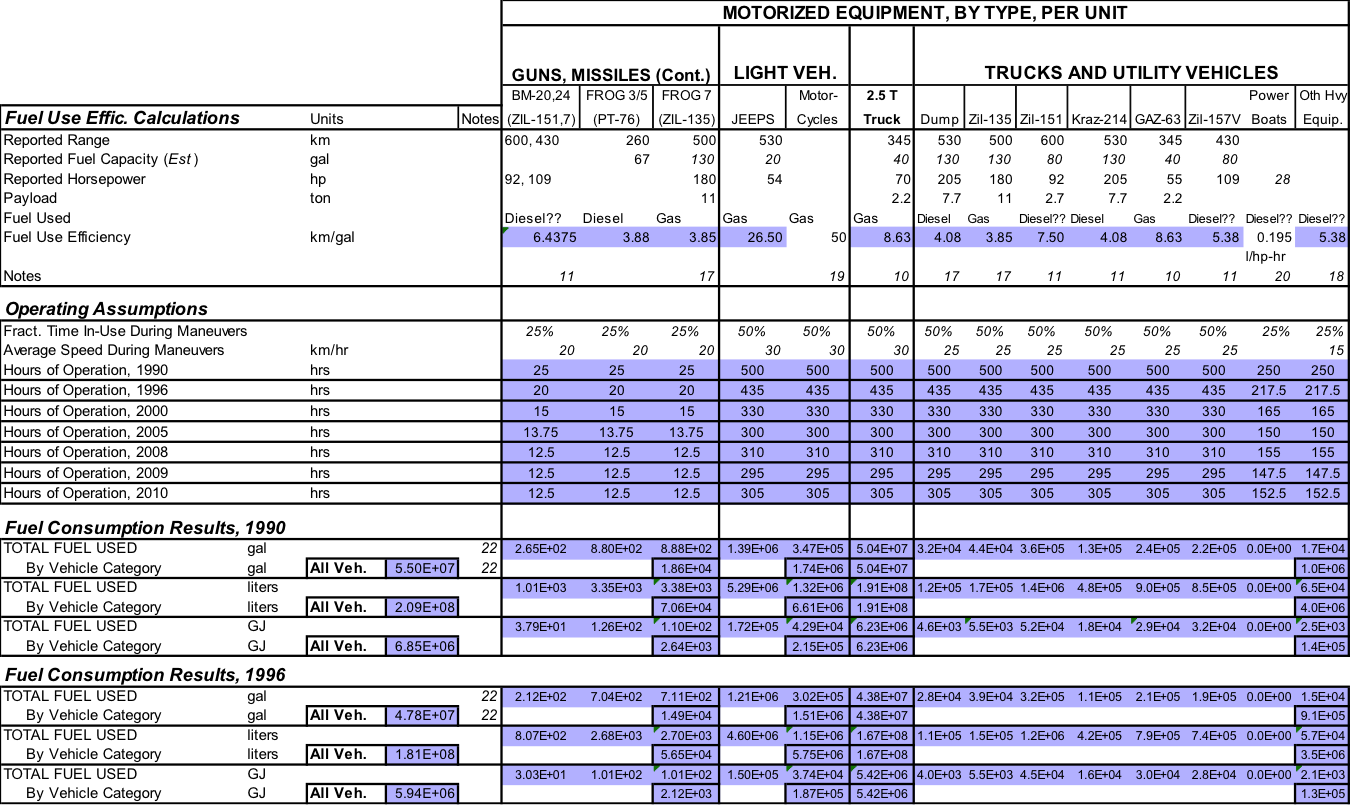
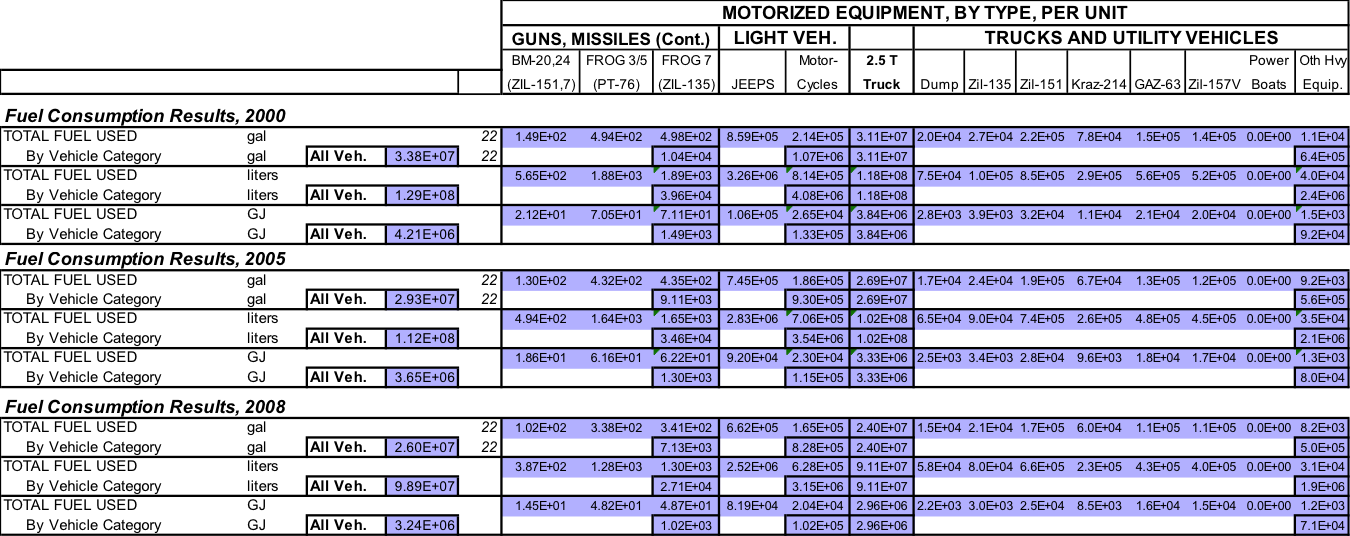


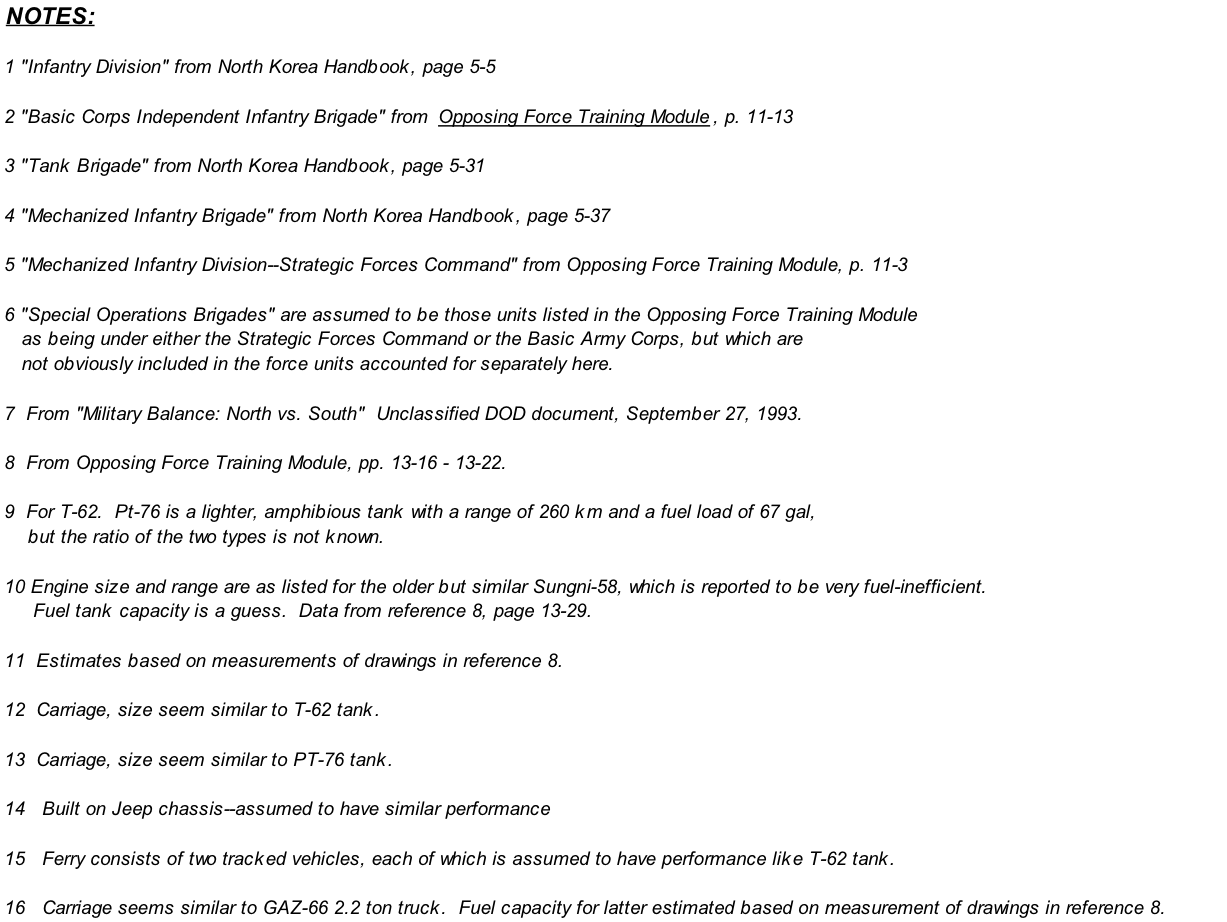
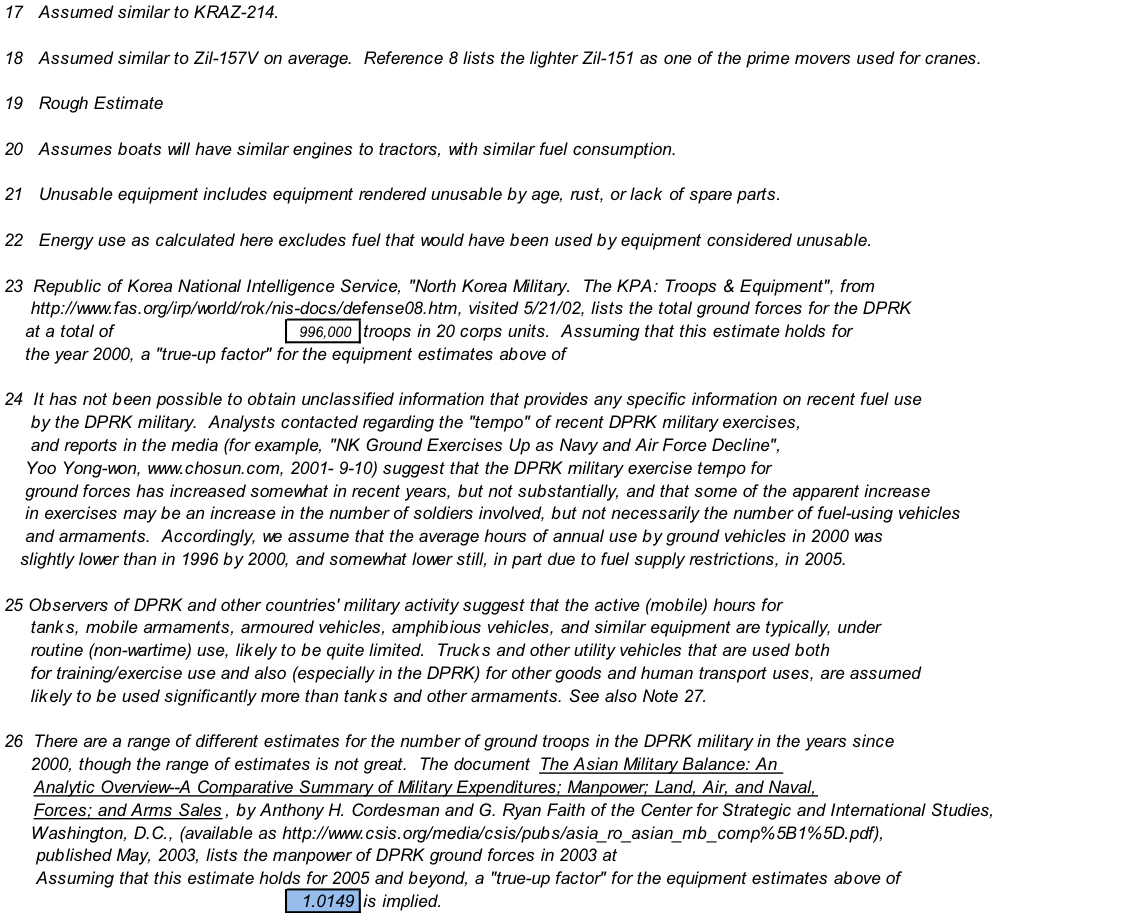

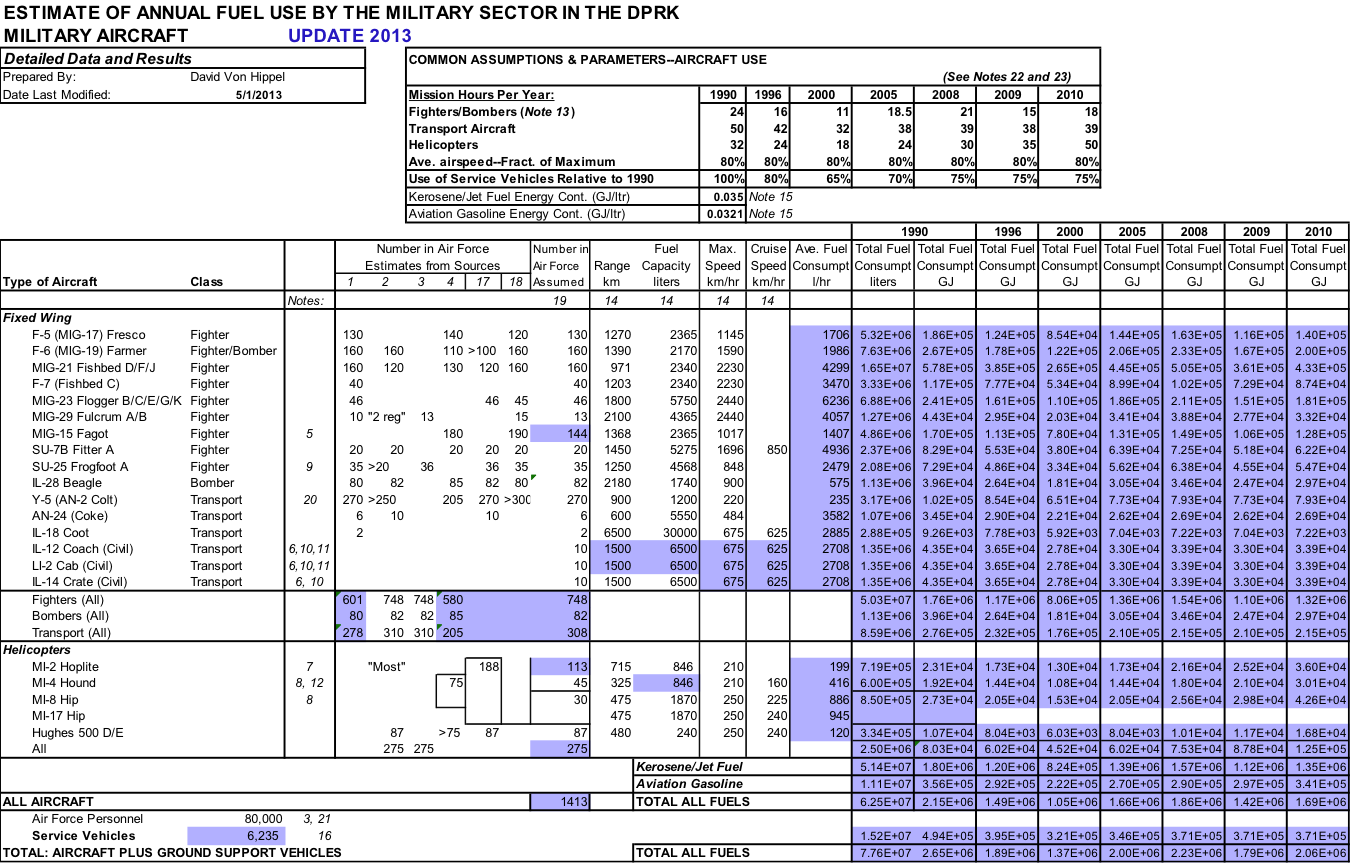
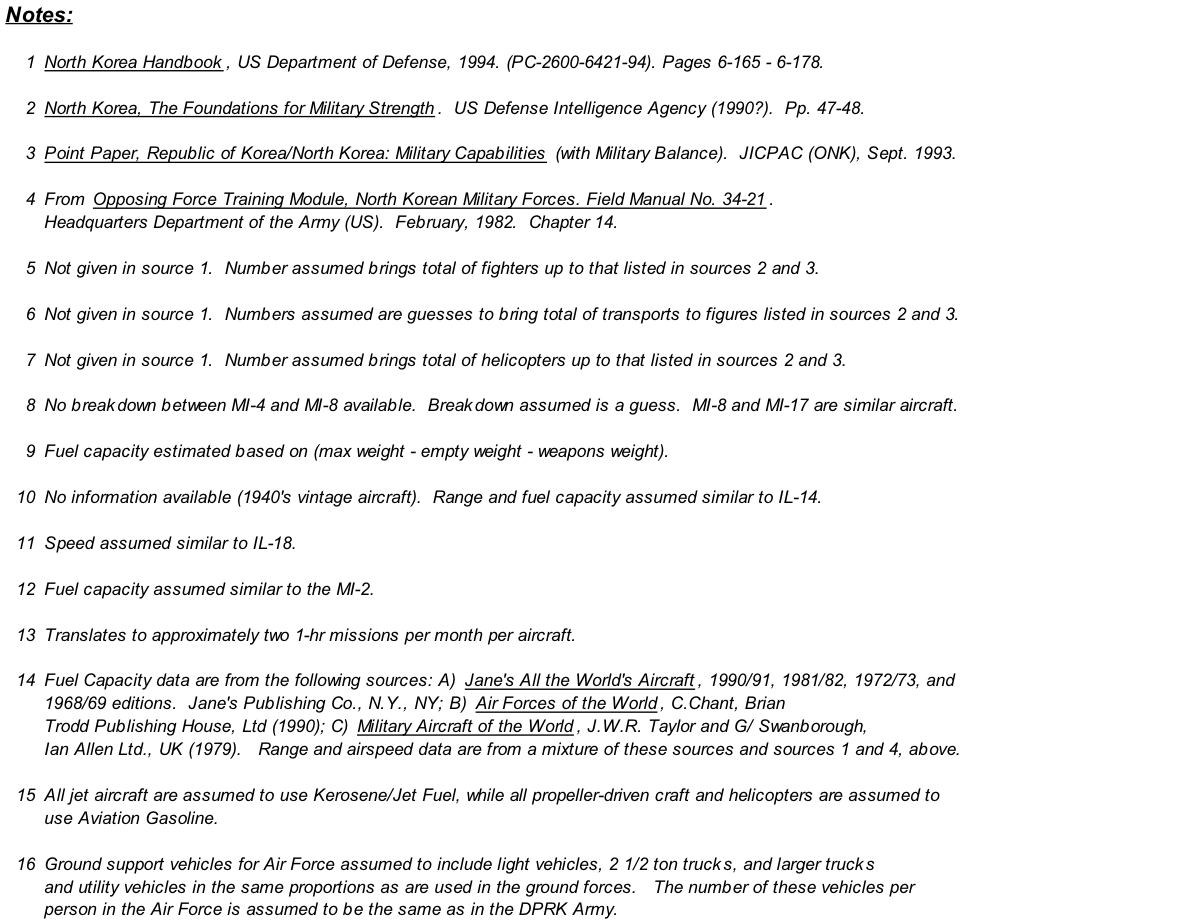
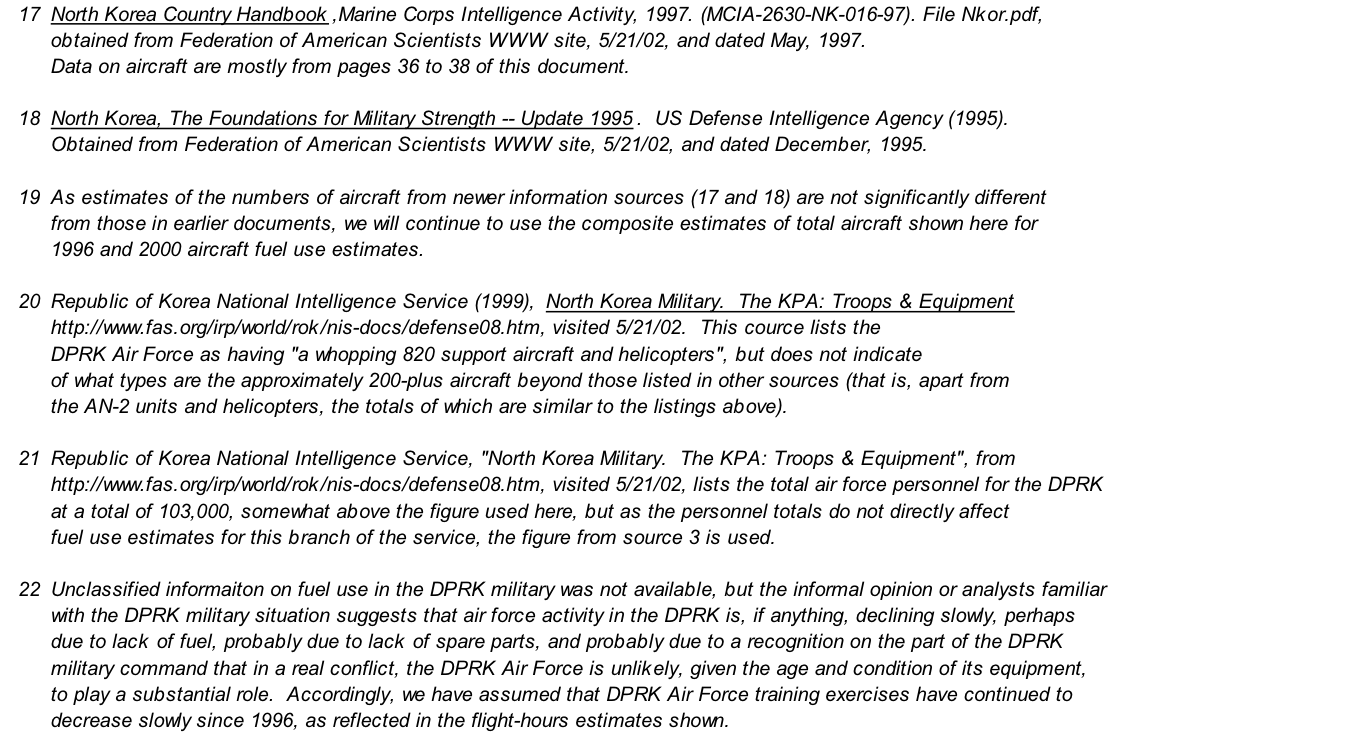
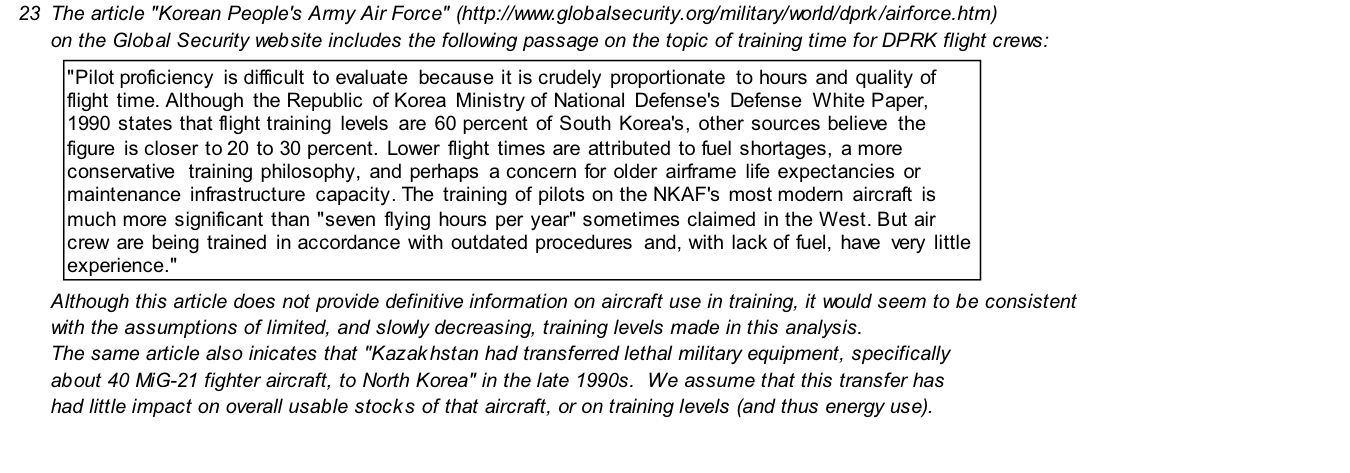
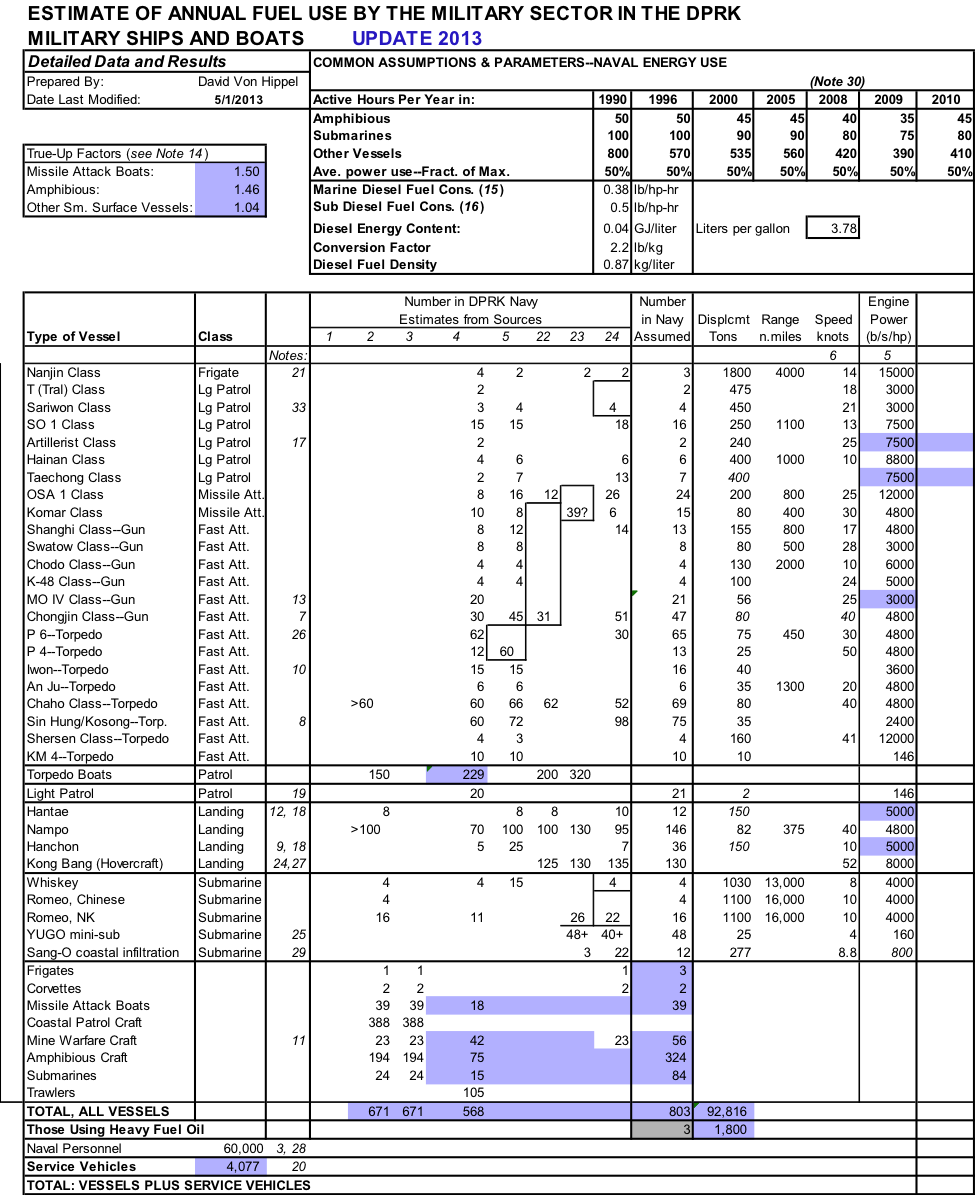
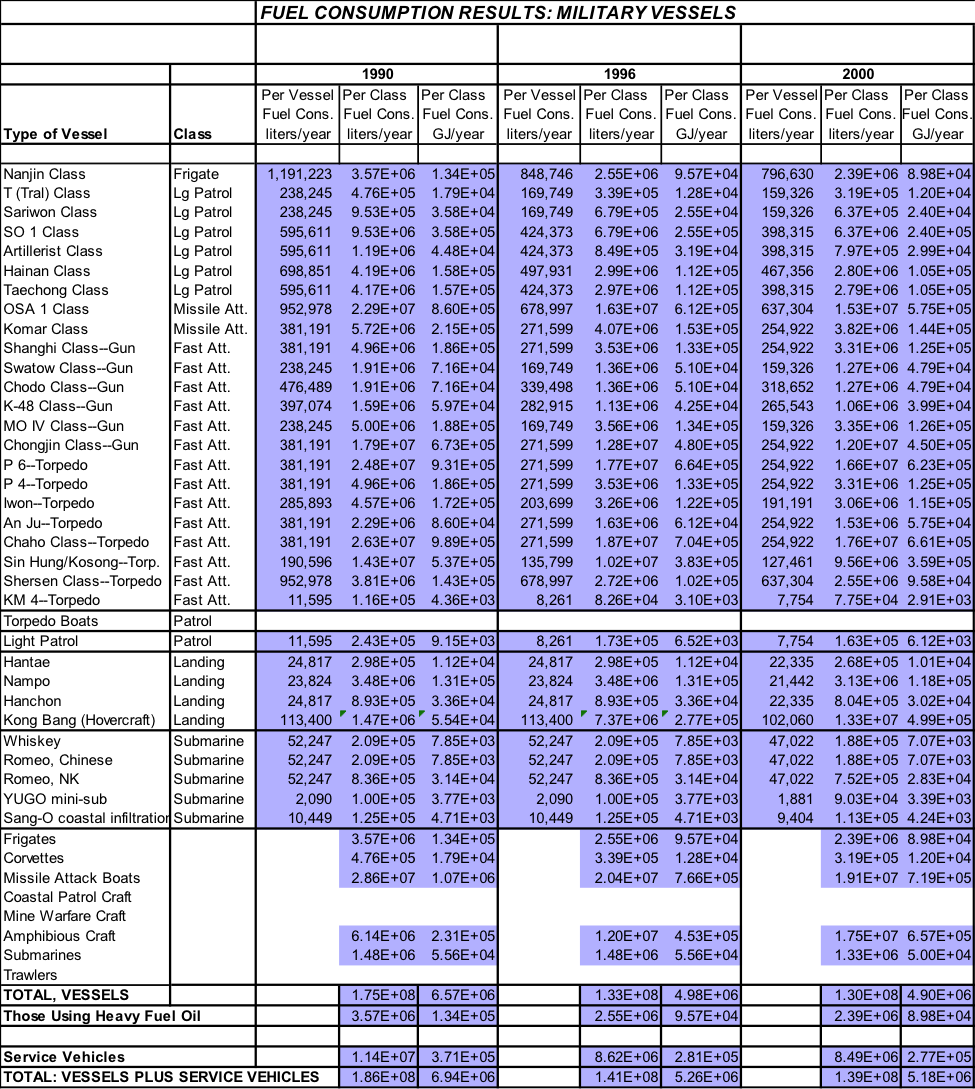
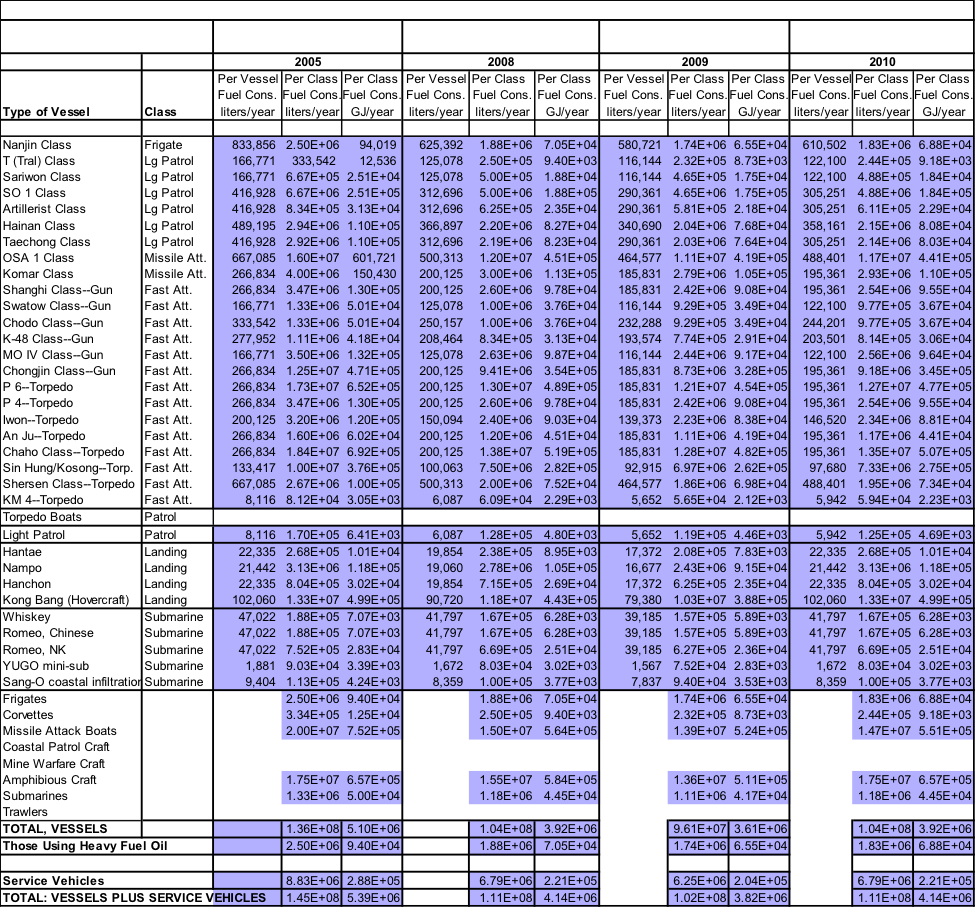
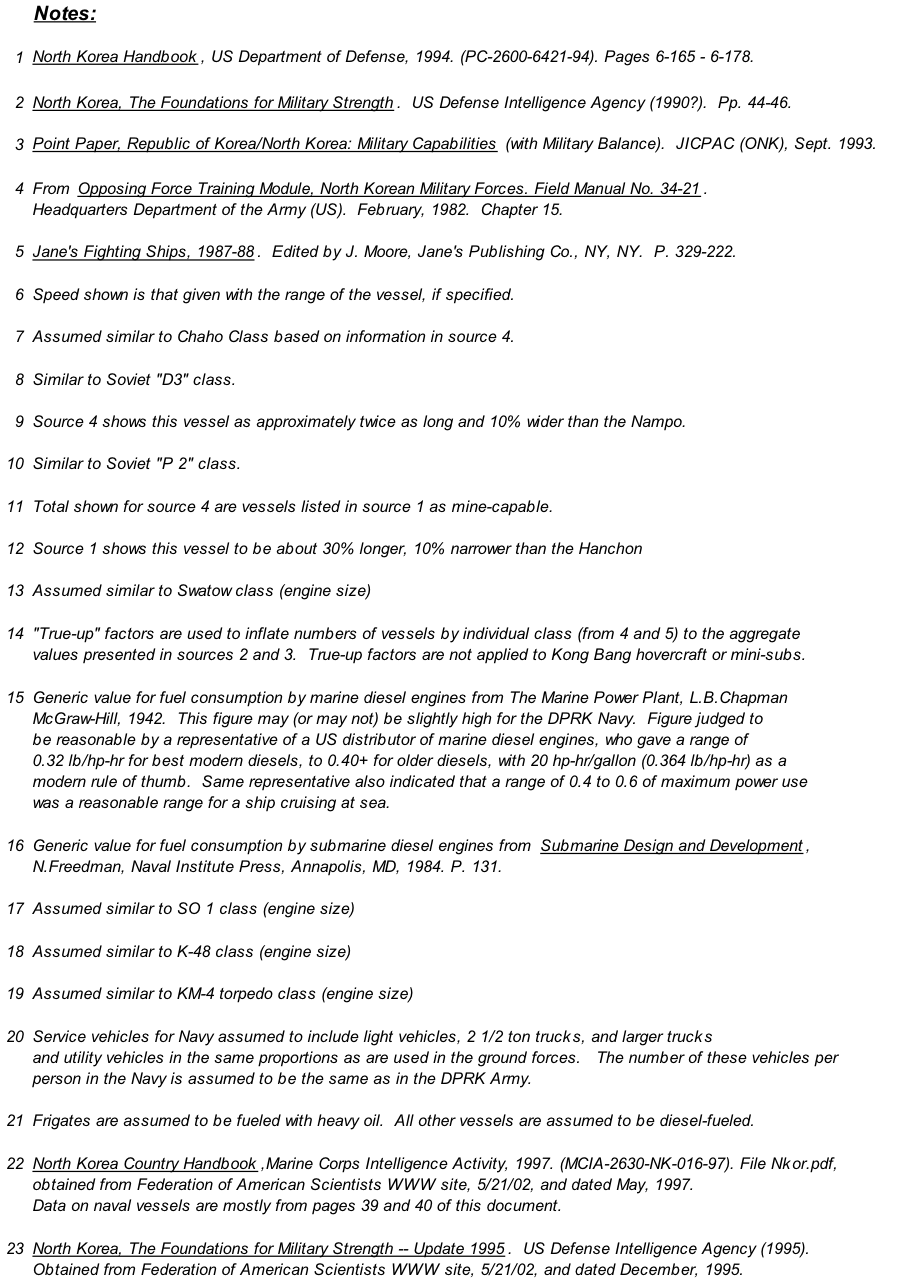
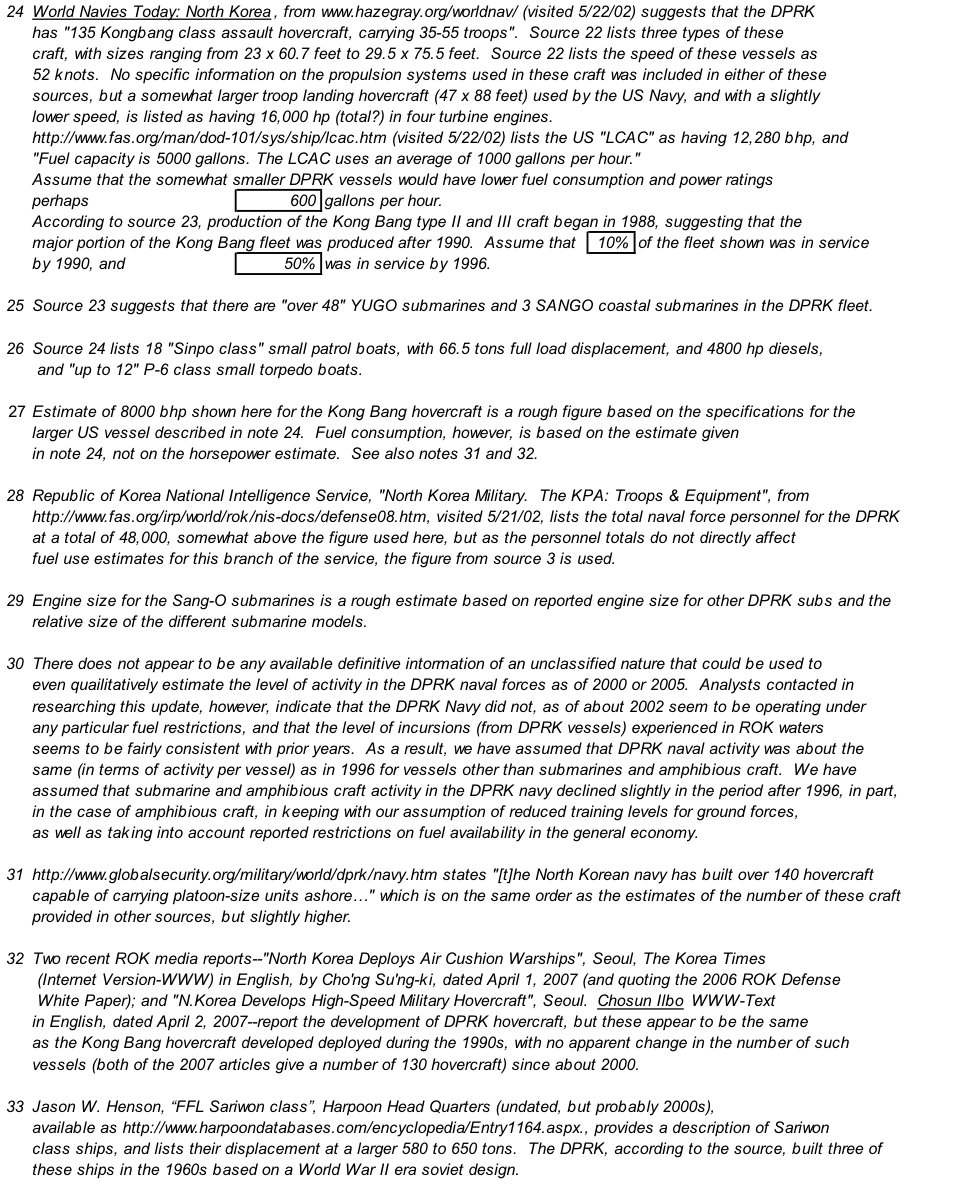
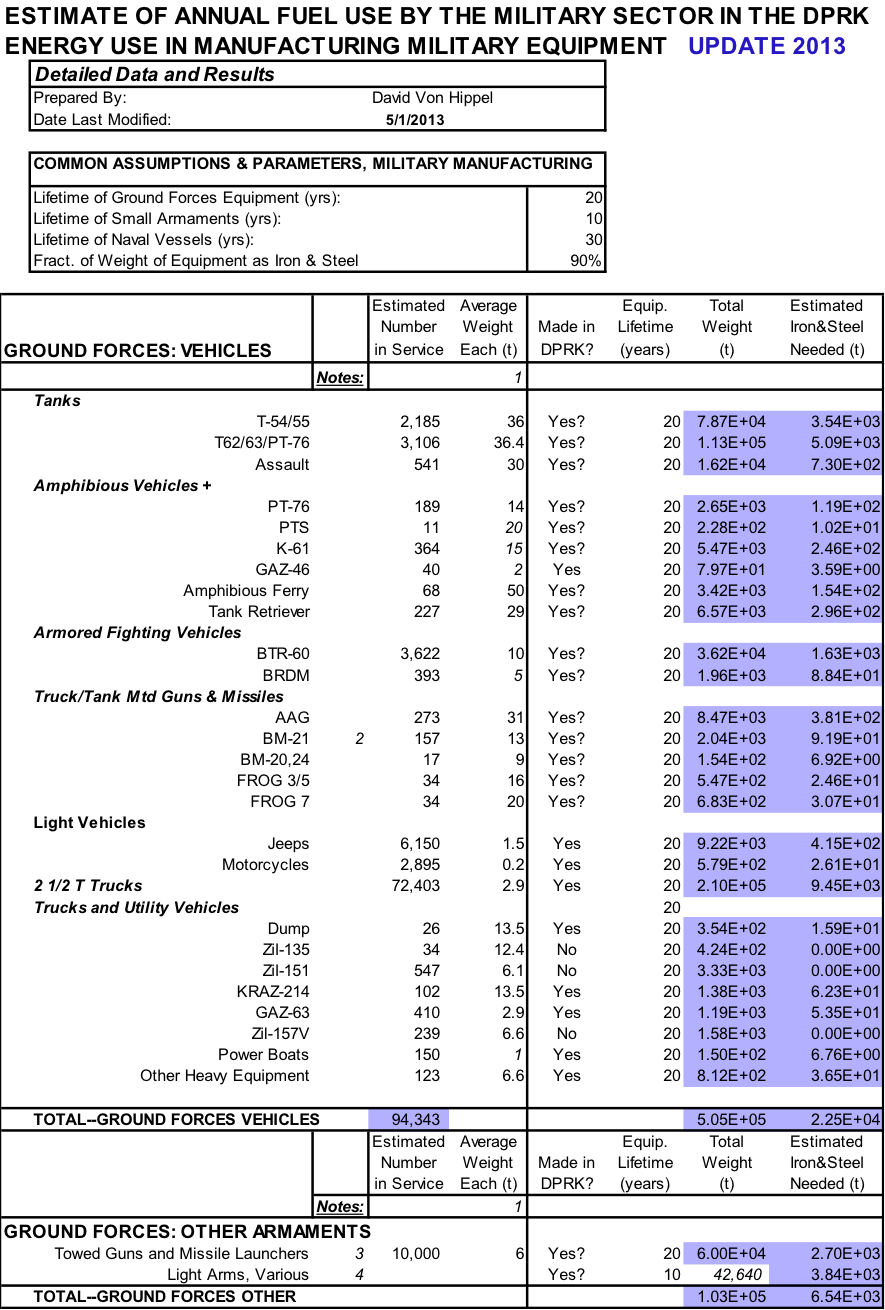


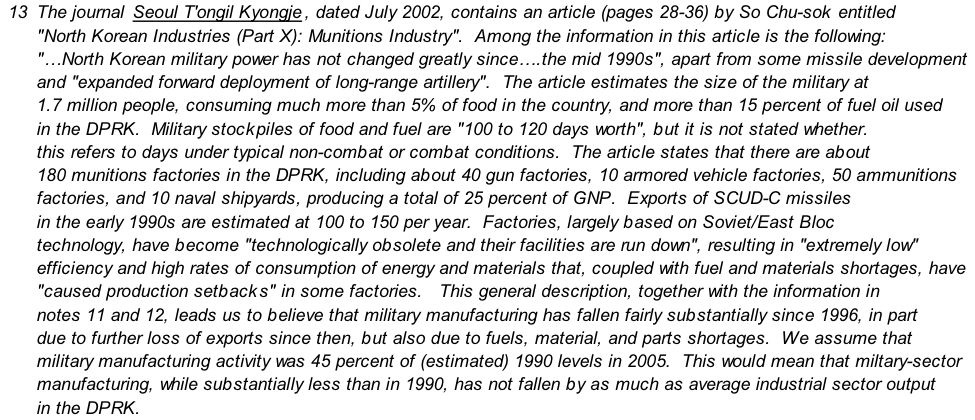
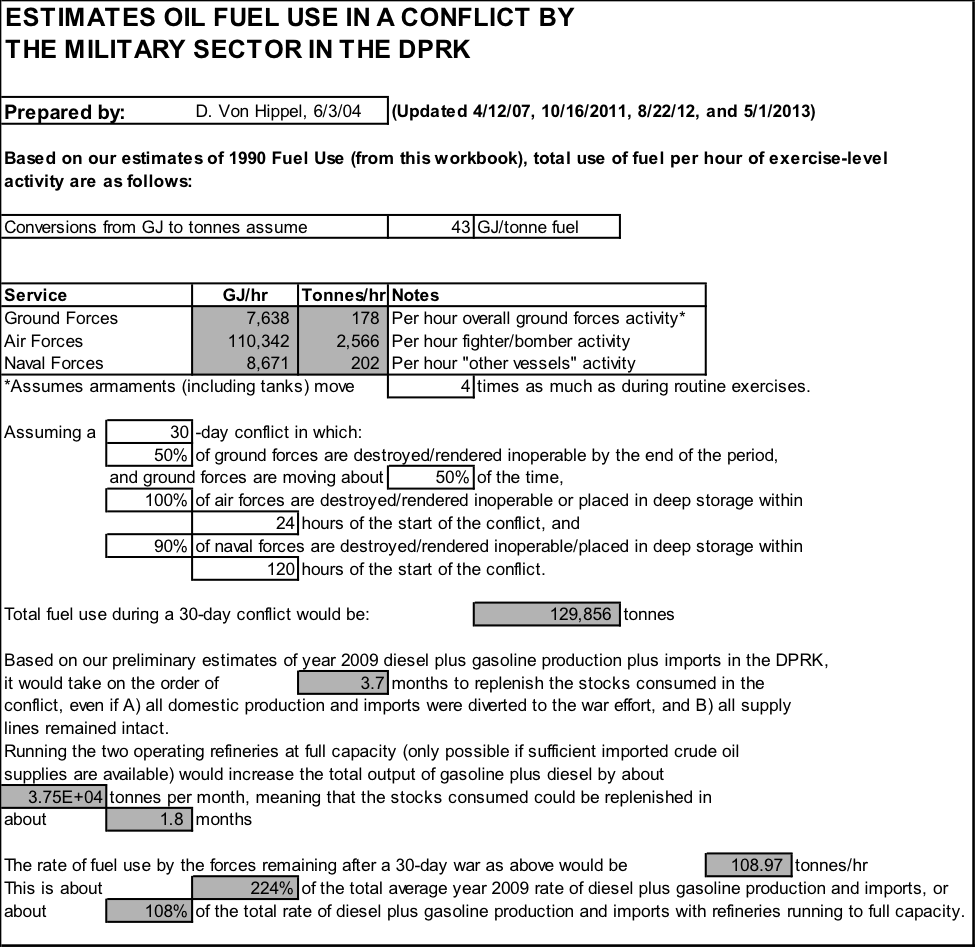

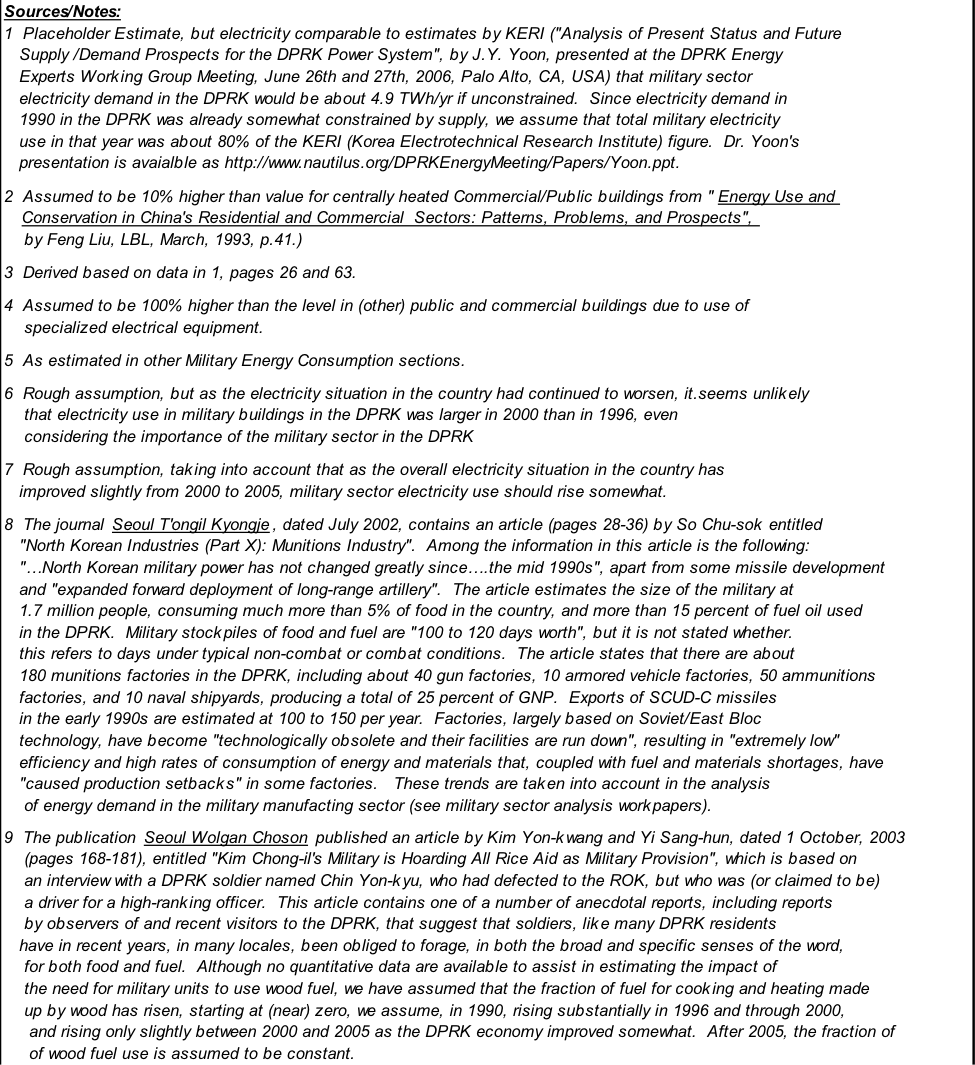
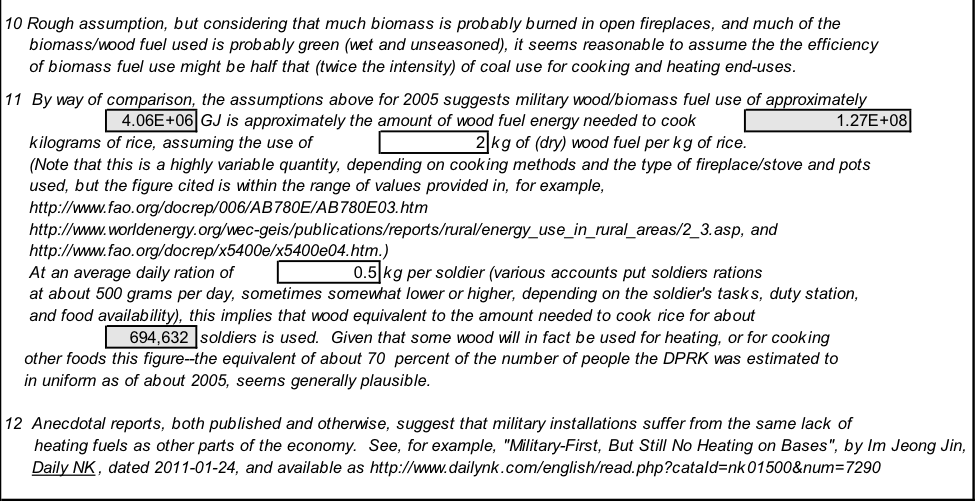
One thought on “An Updated Estimate of Energy Use in the Armed Forces of the Democratic People’s Republic of Korea (DPRK)”